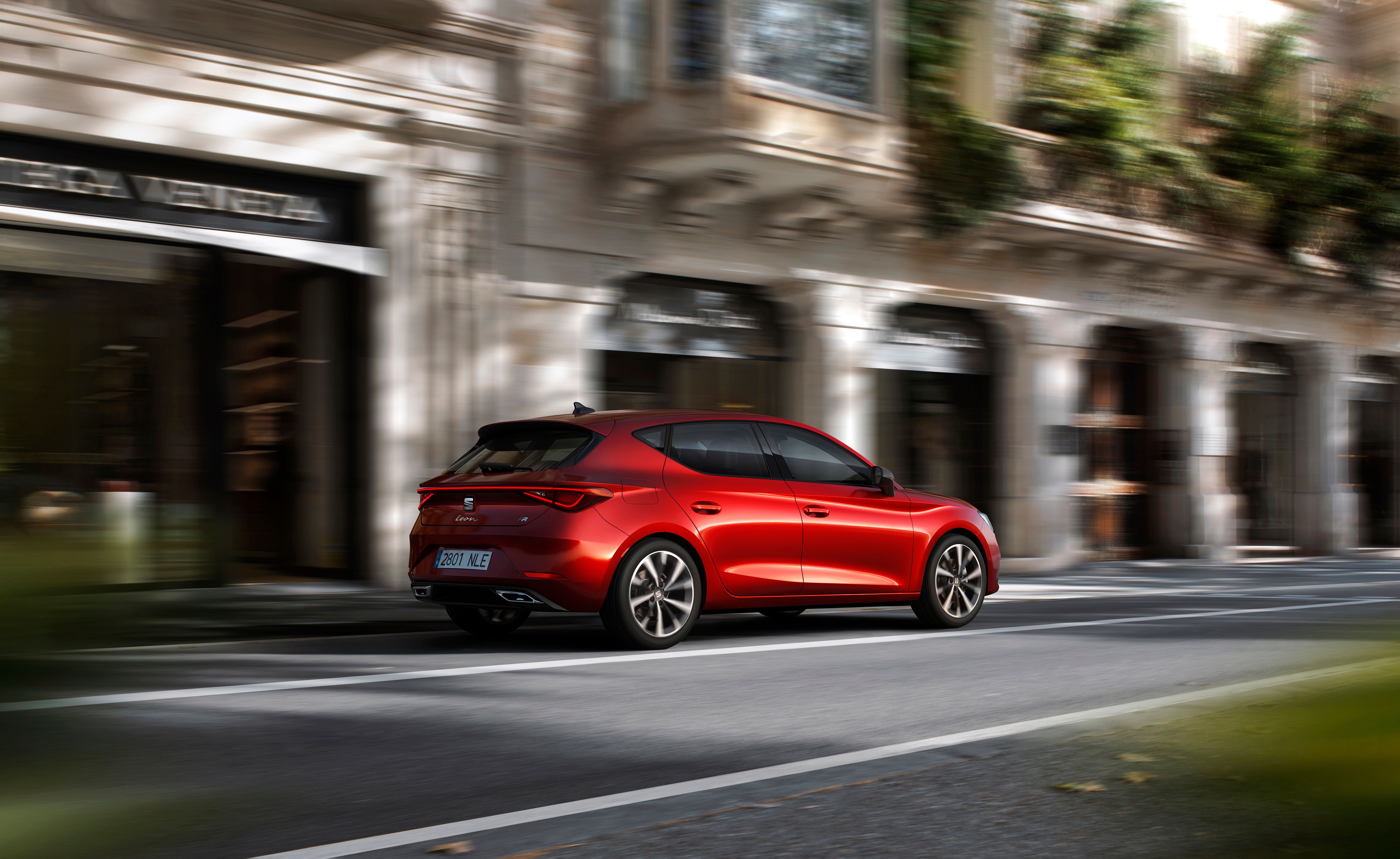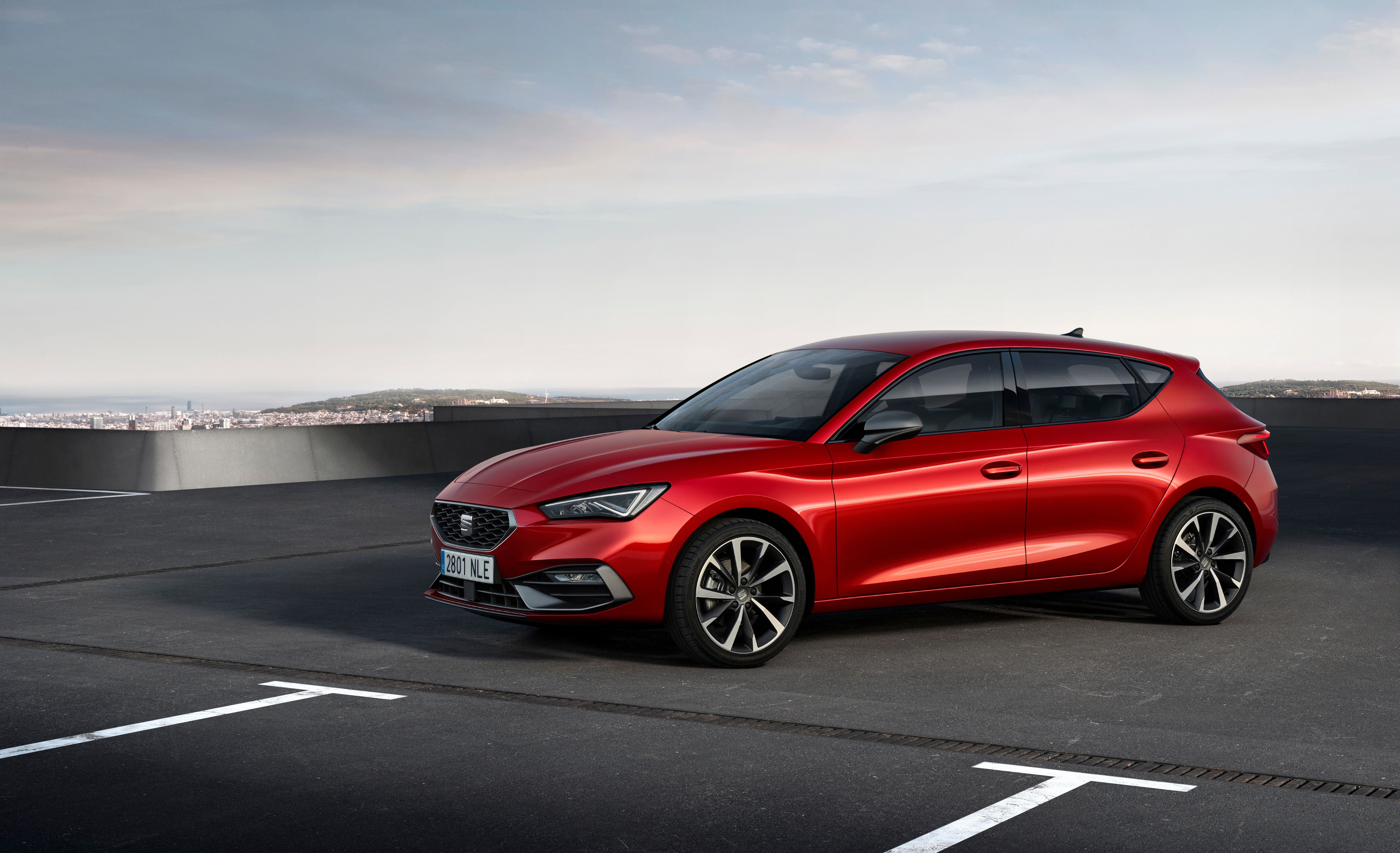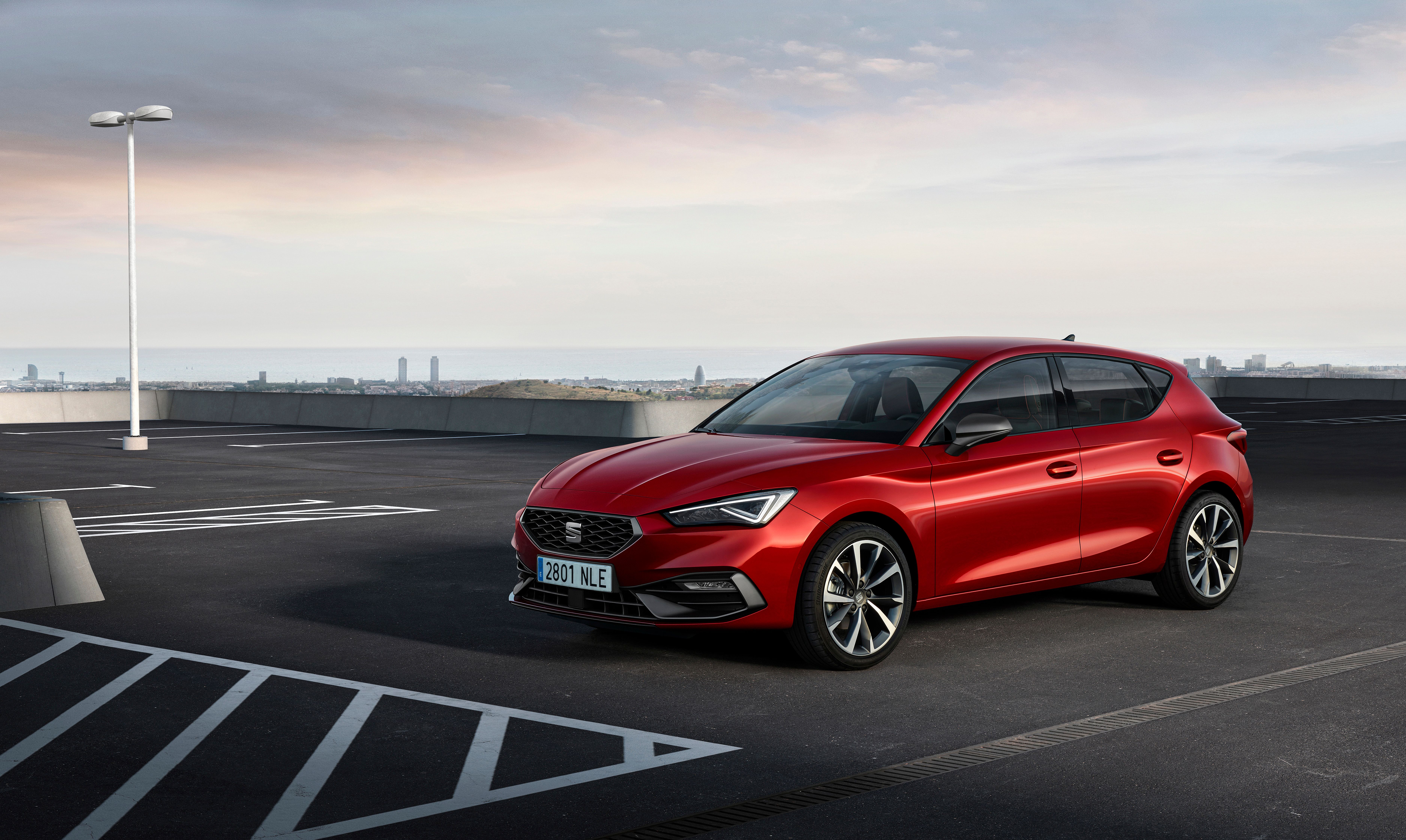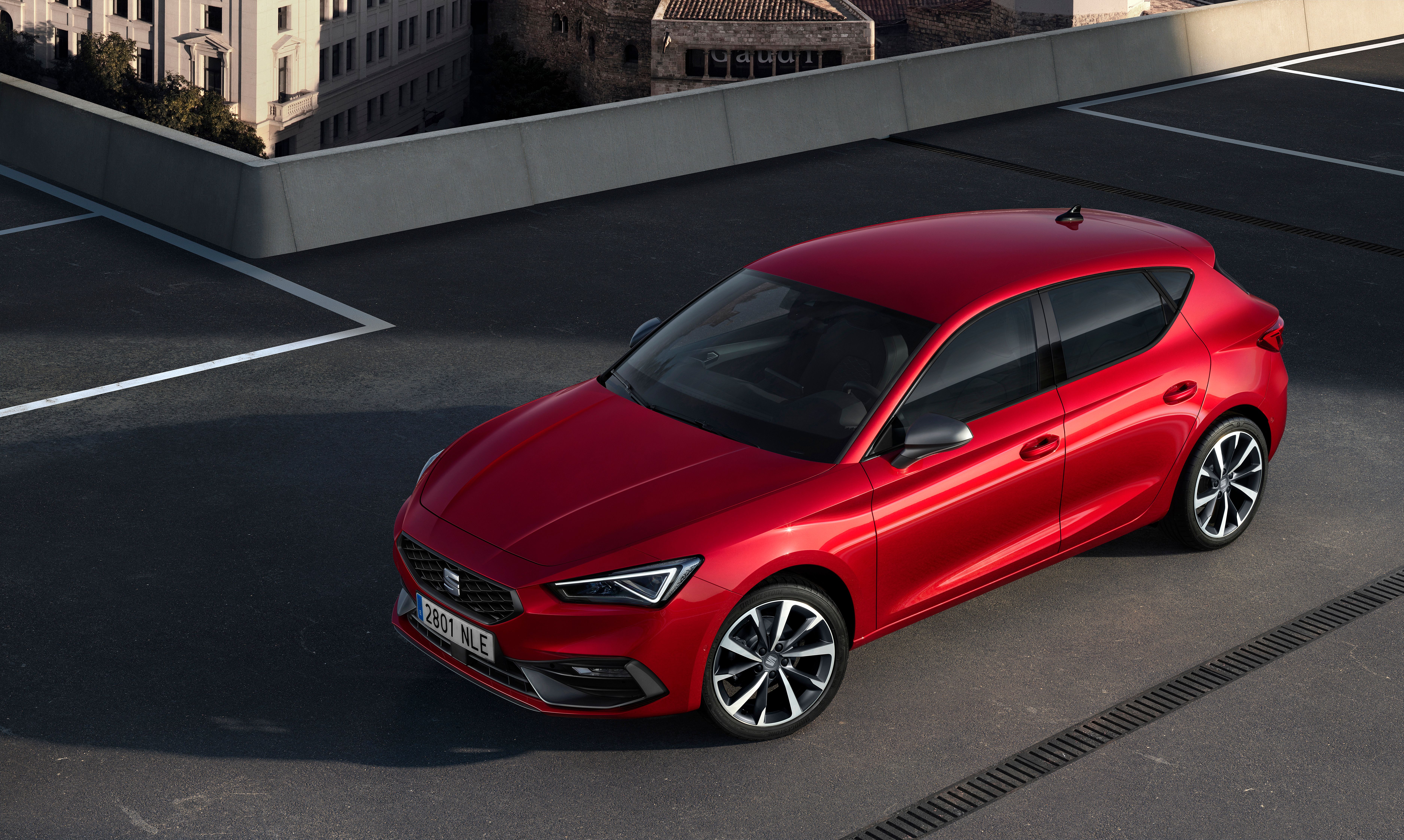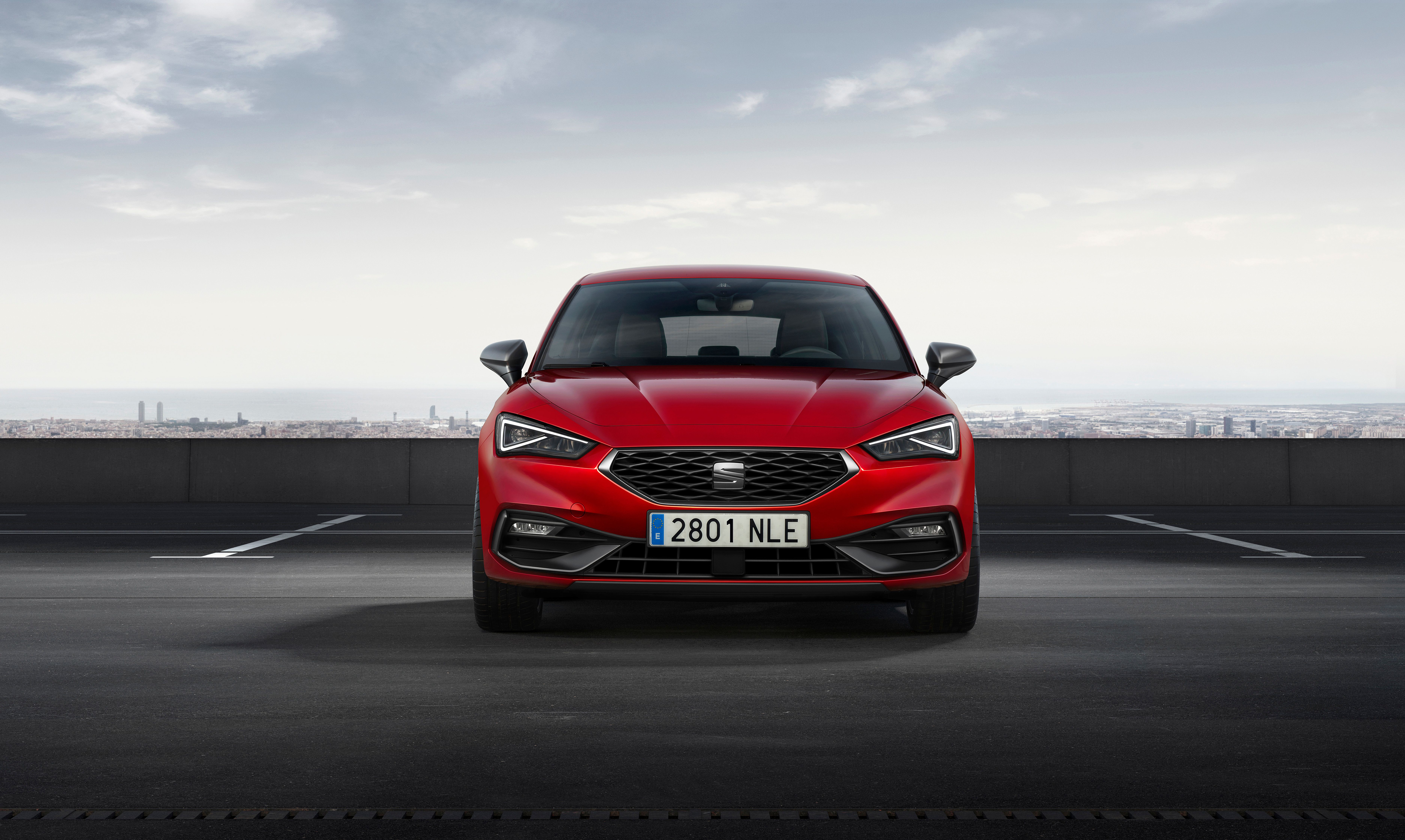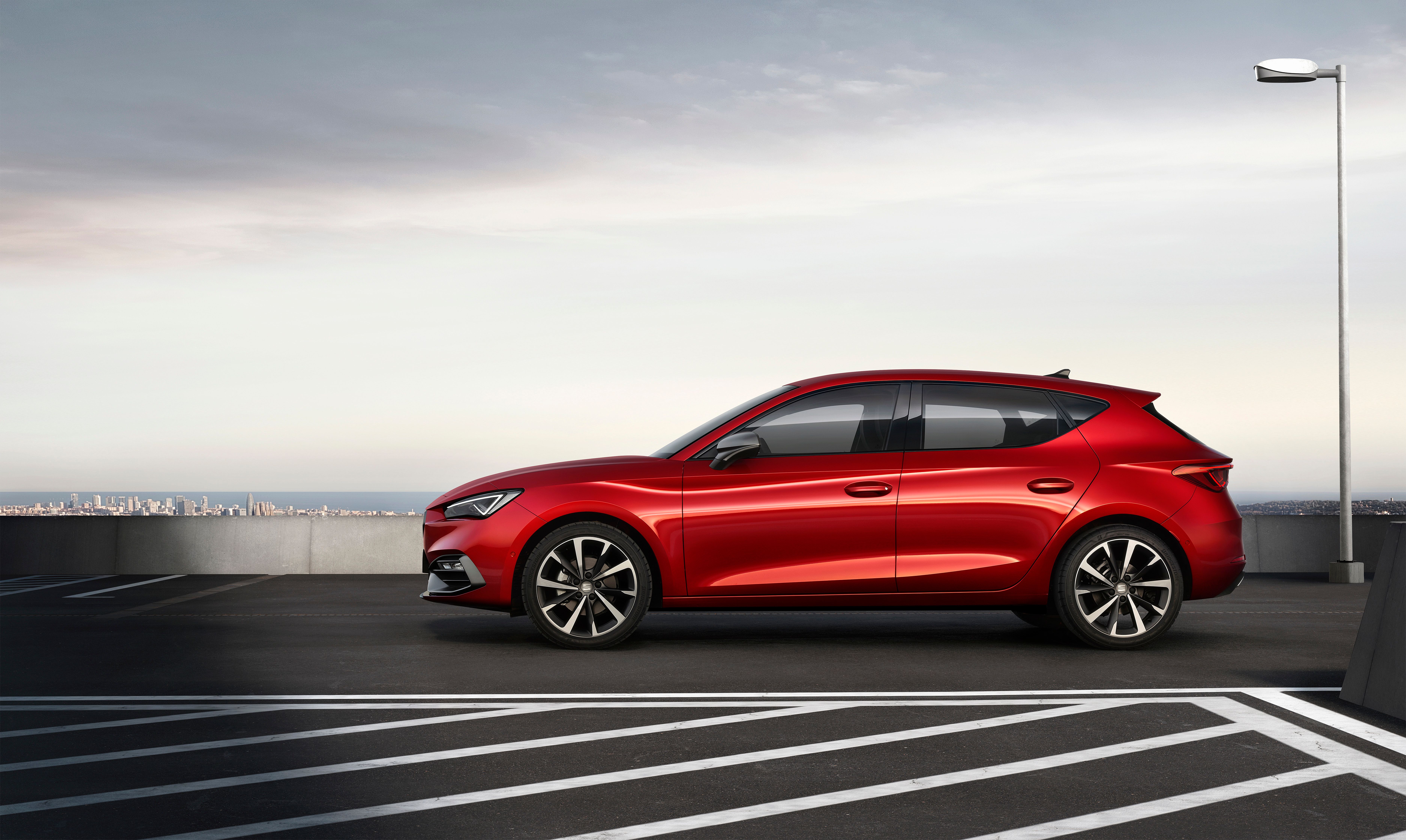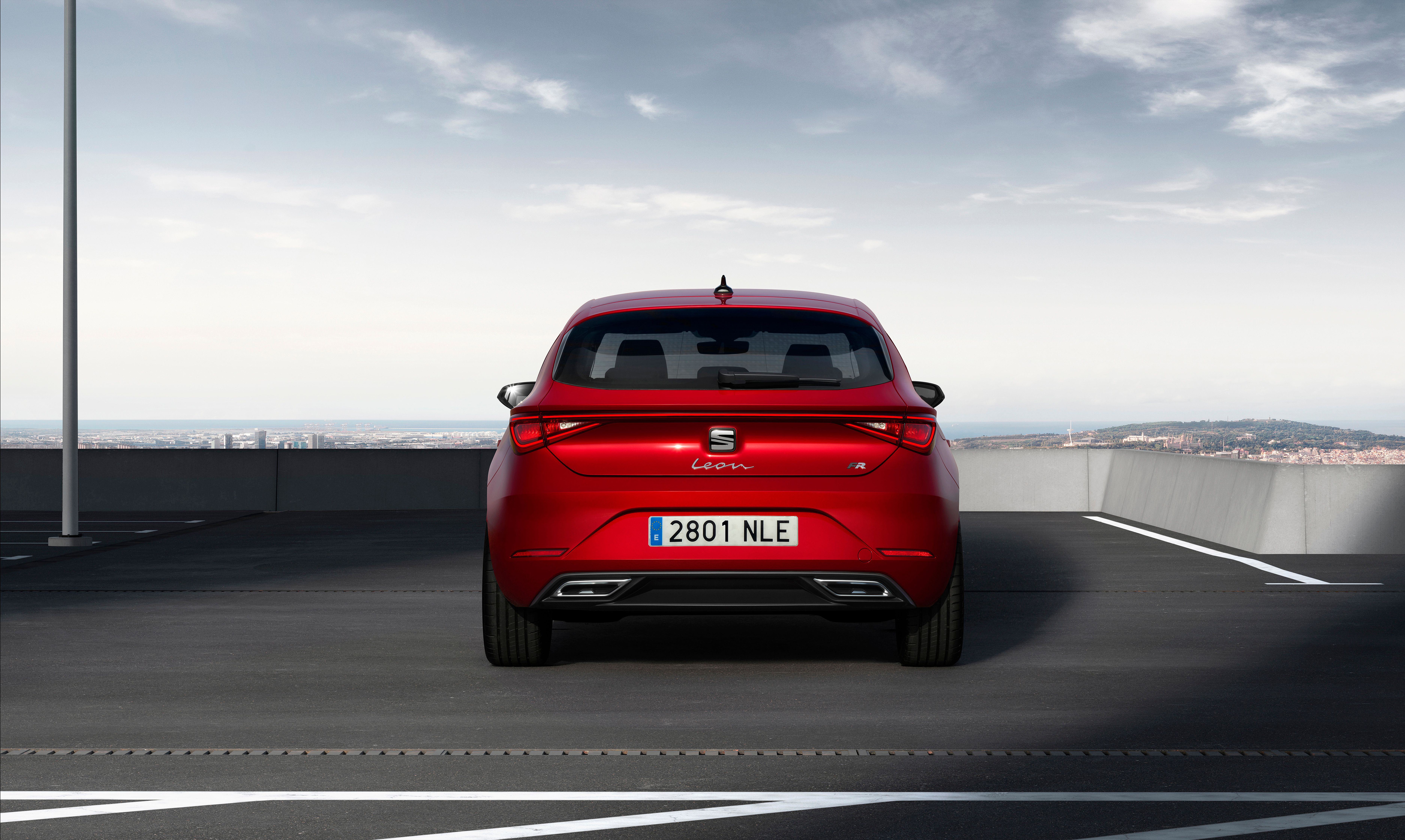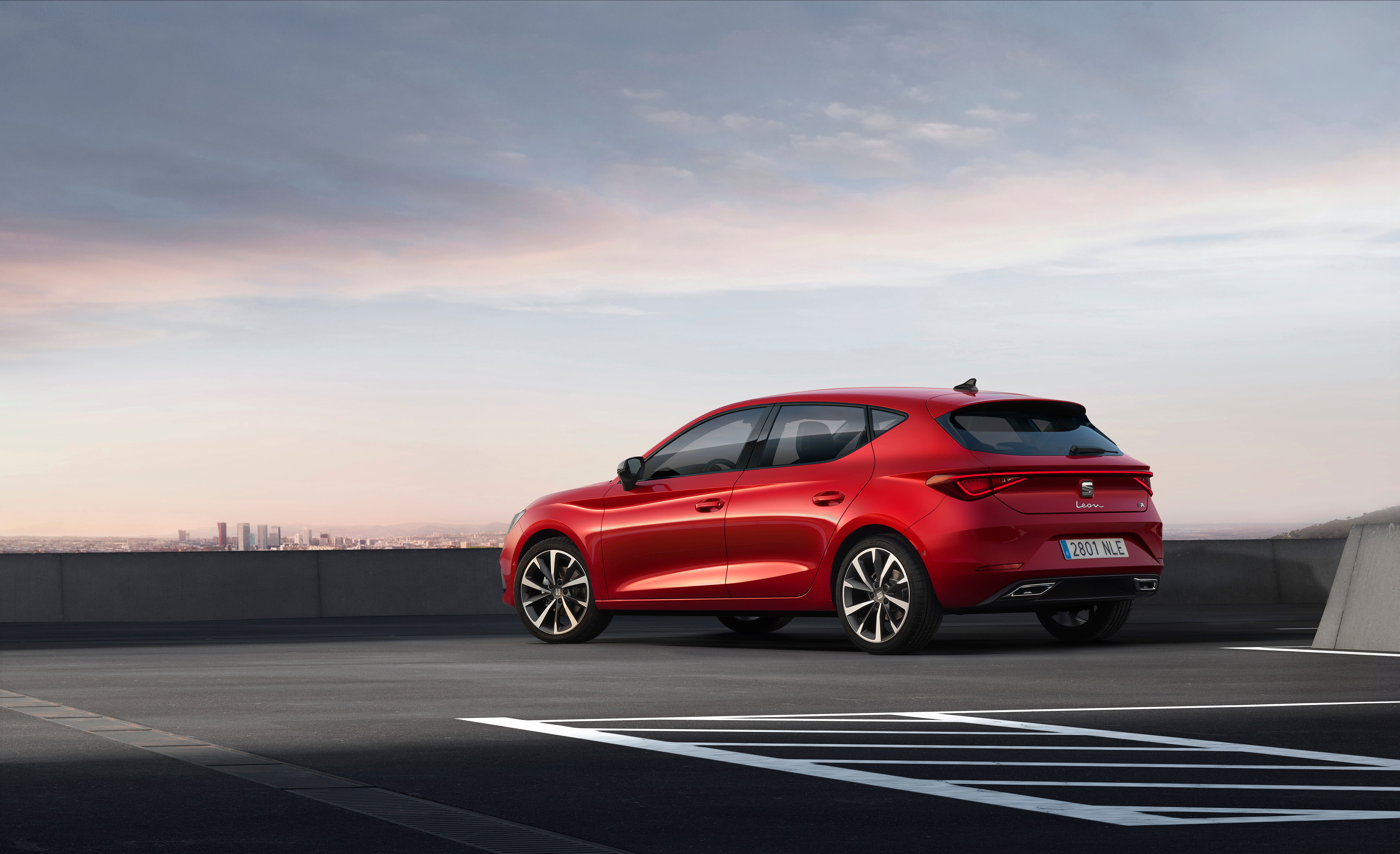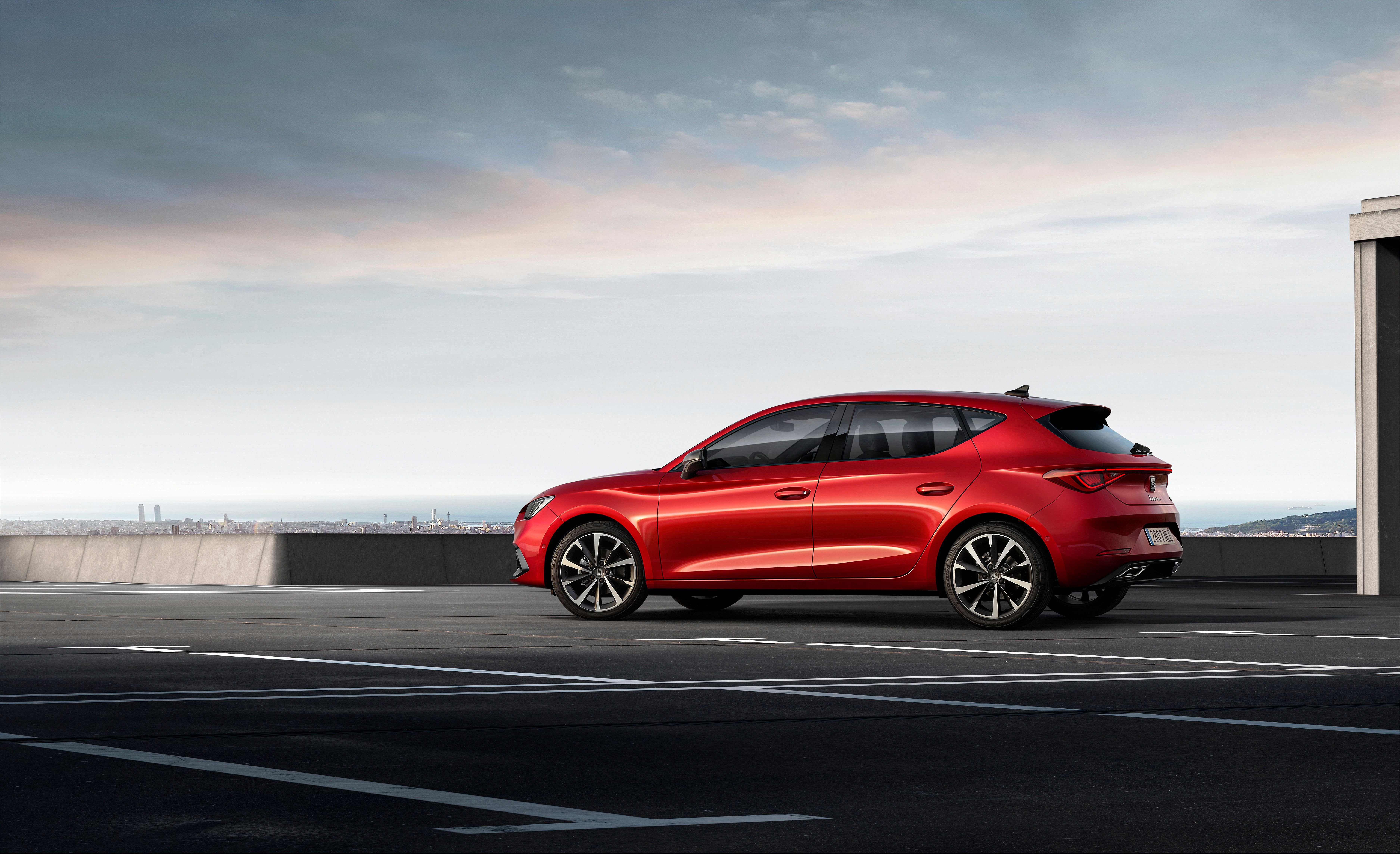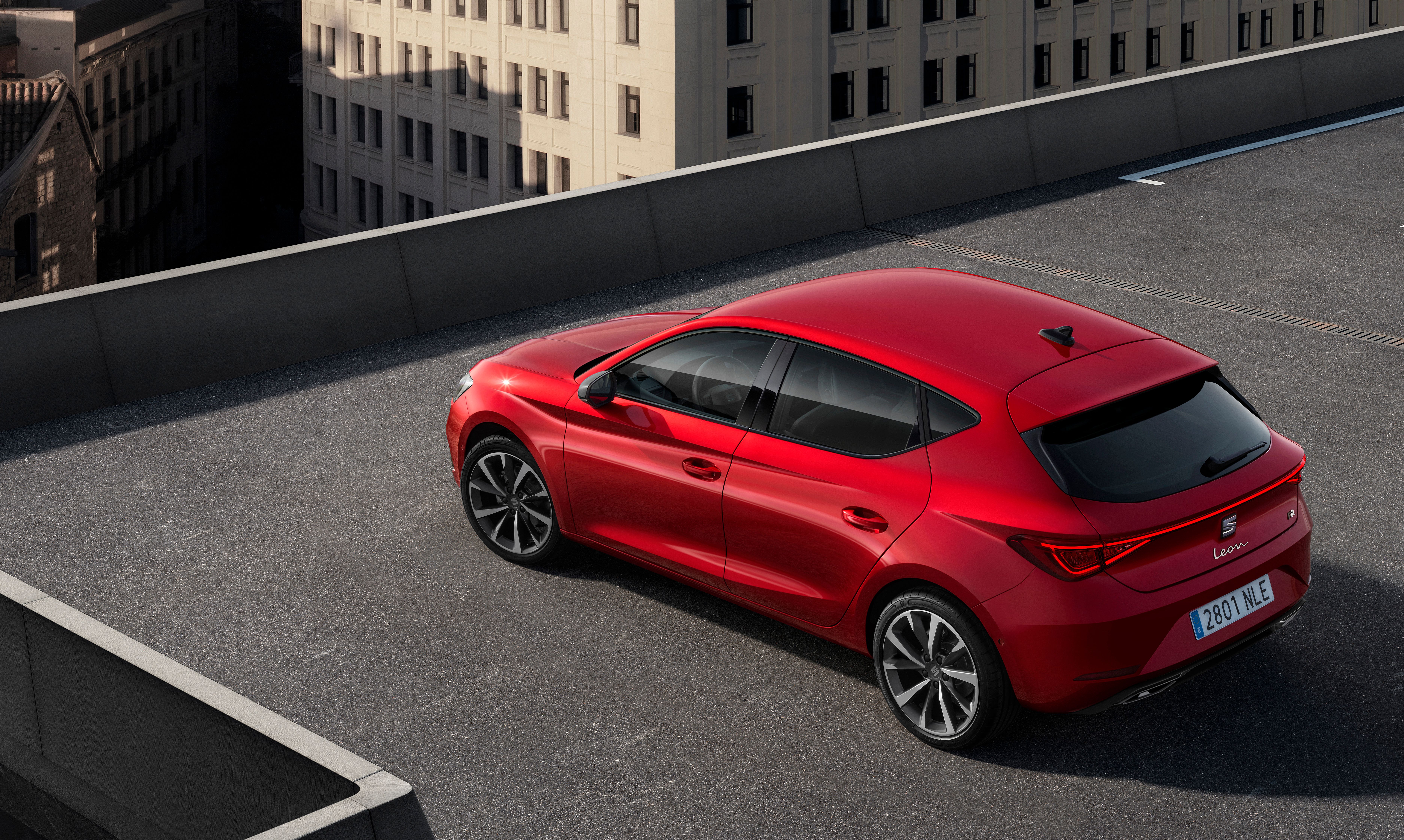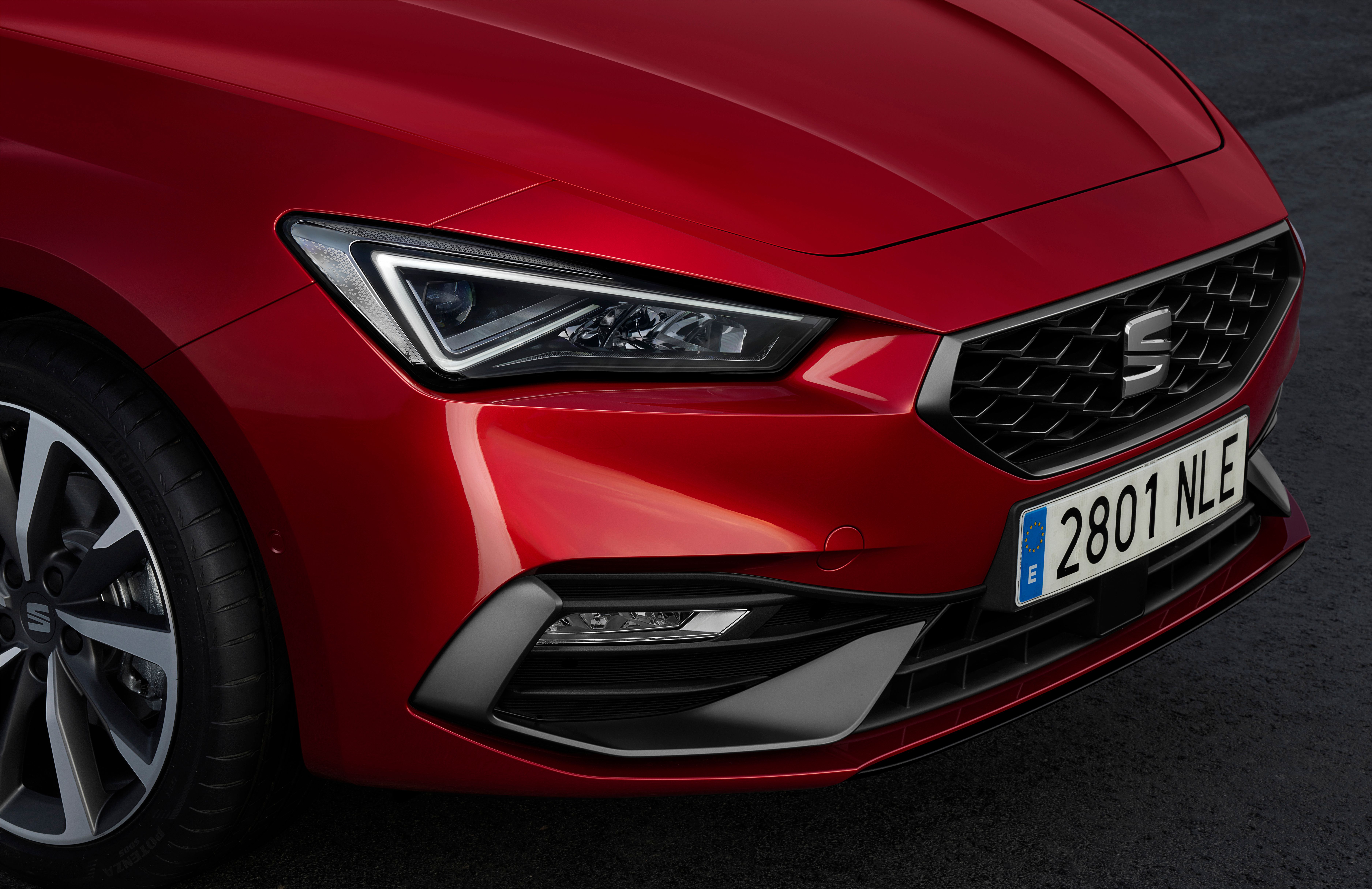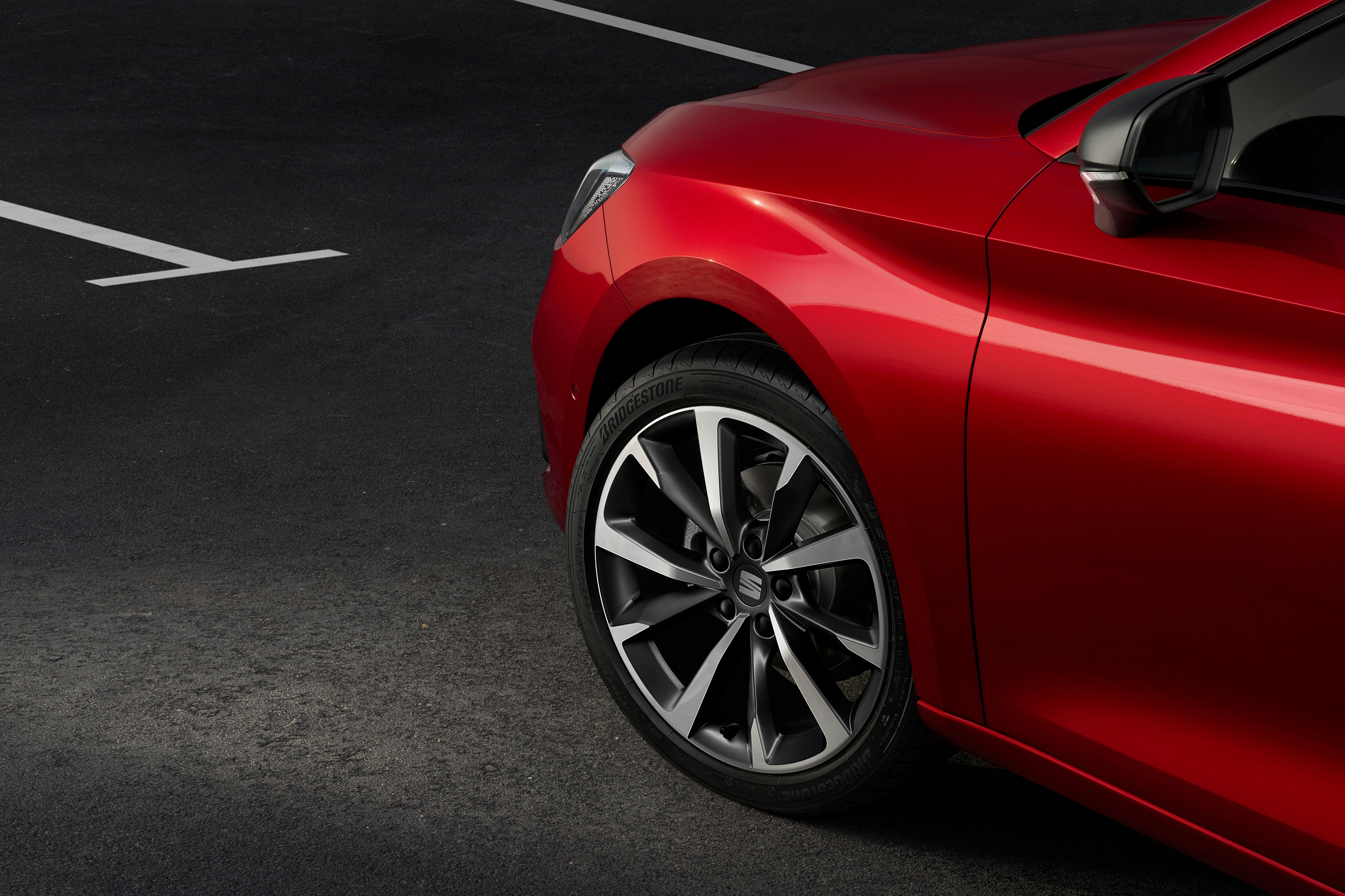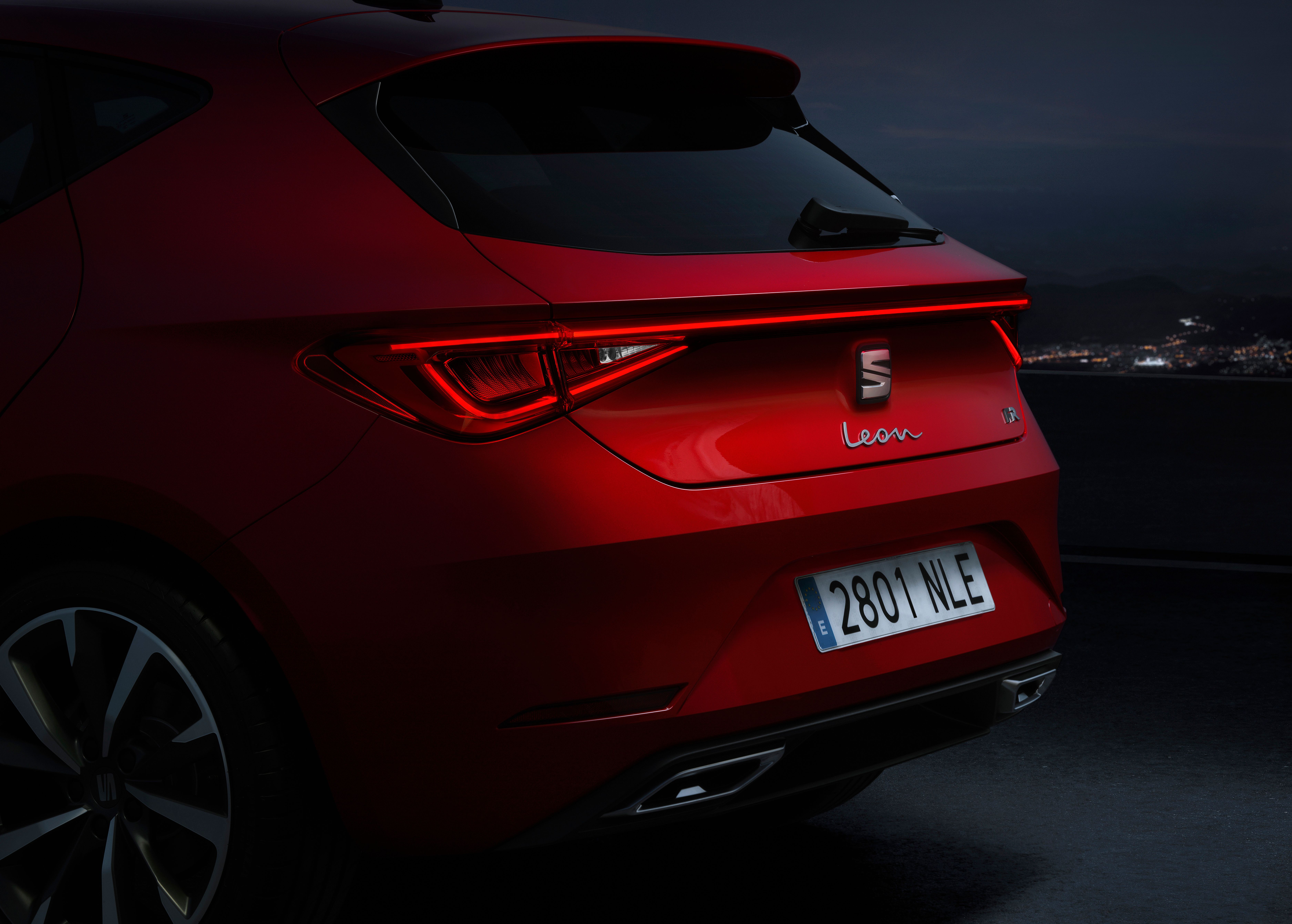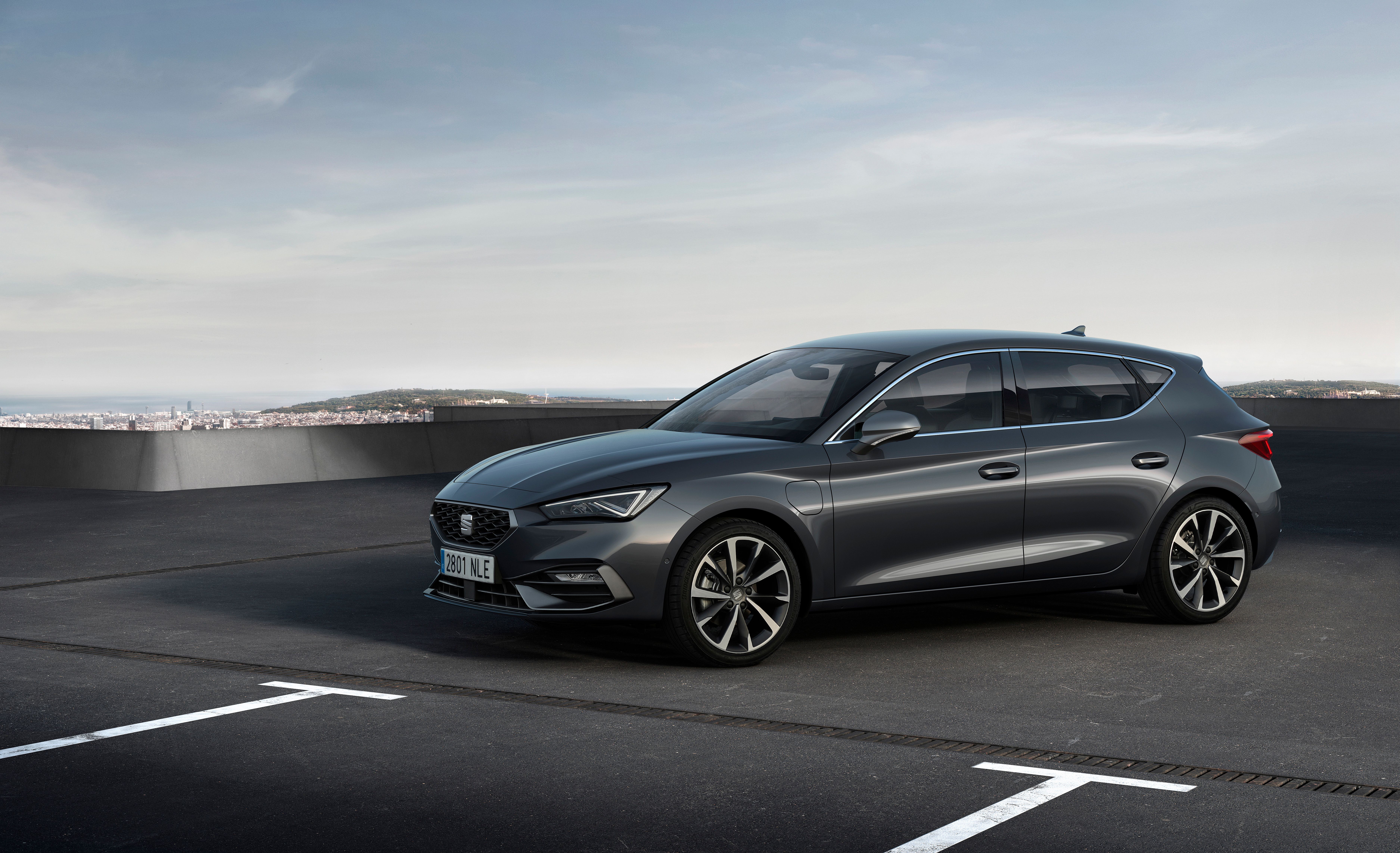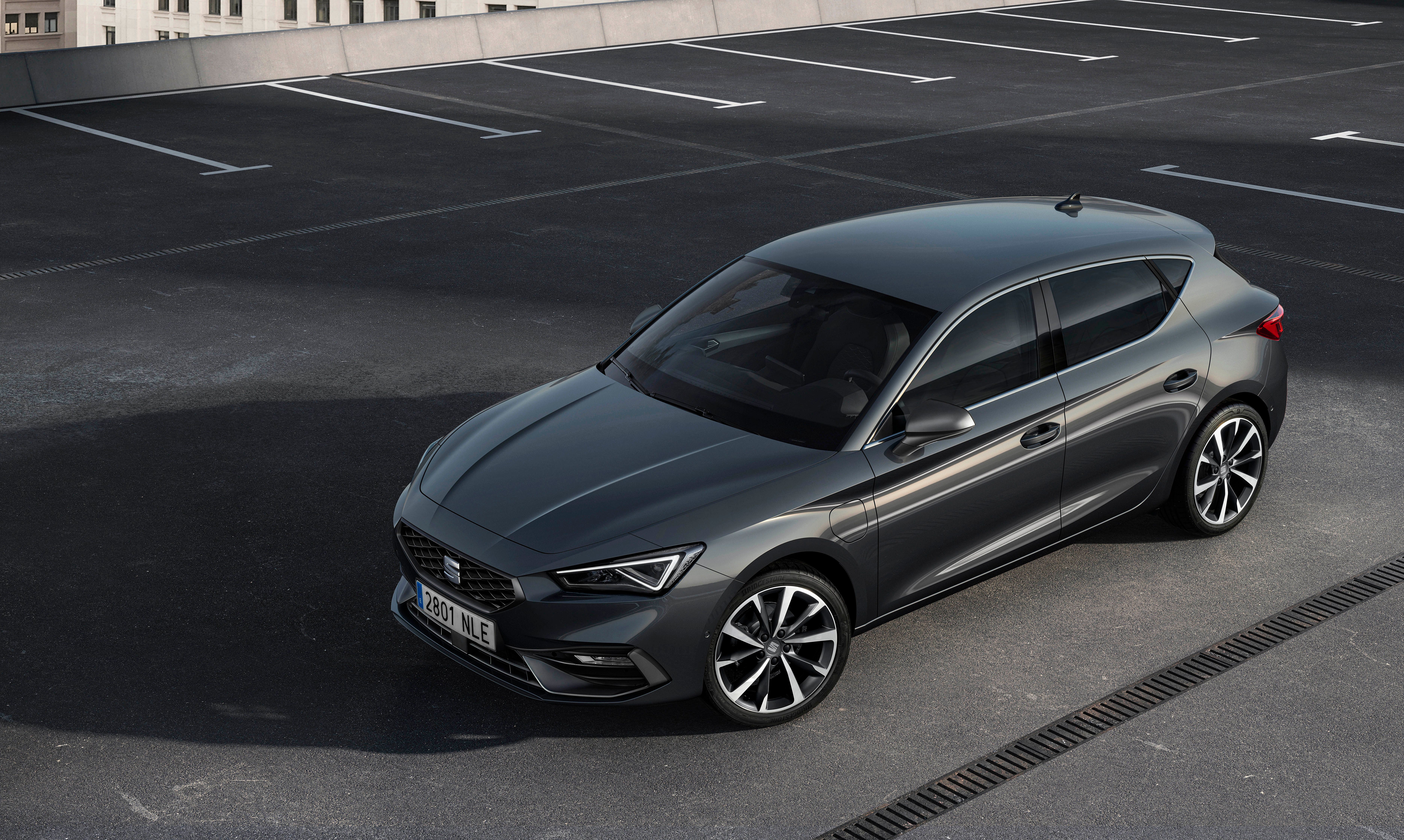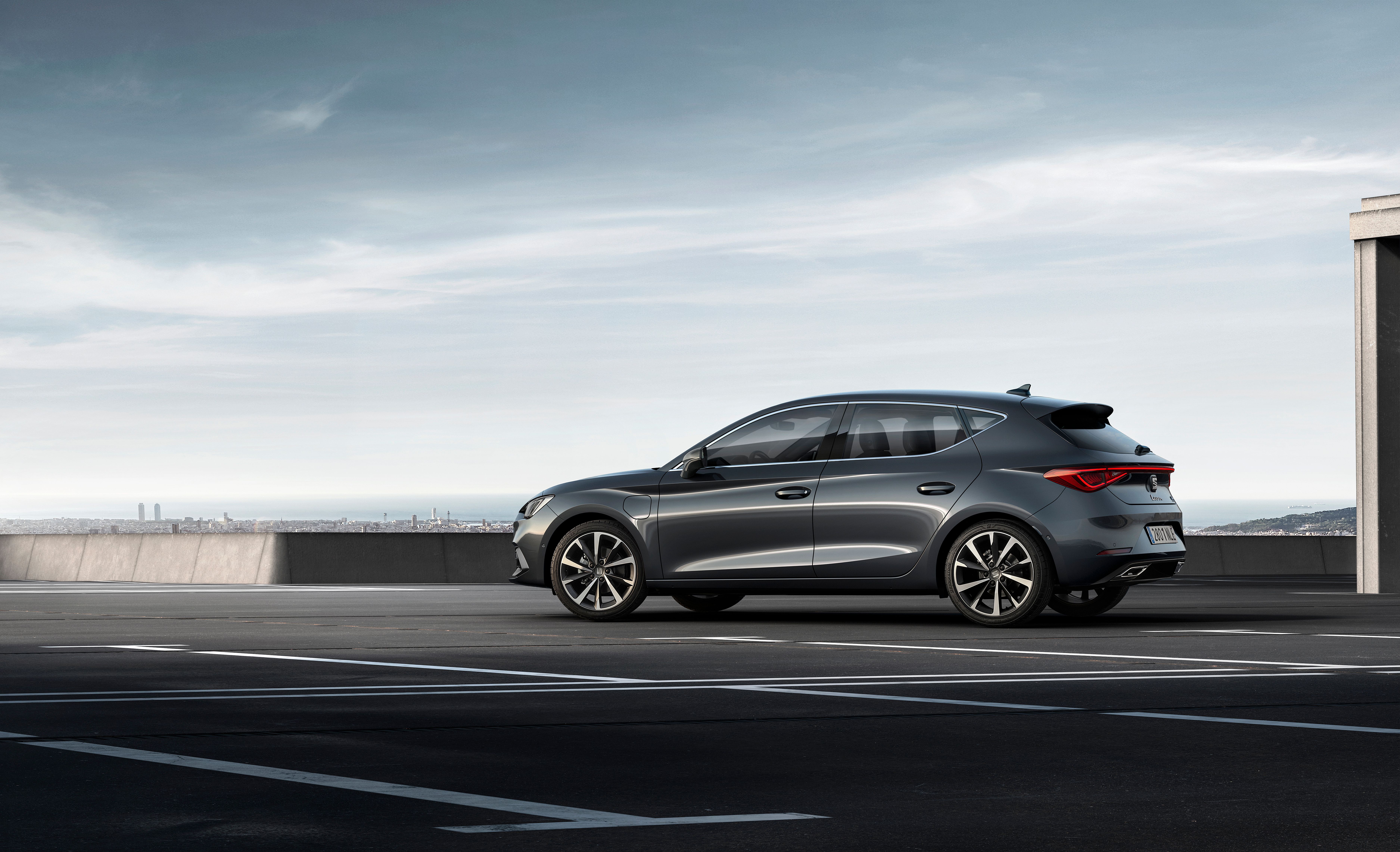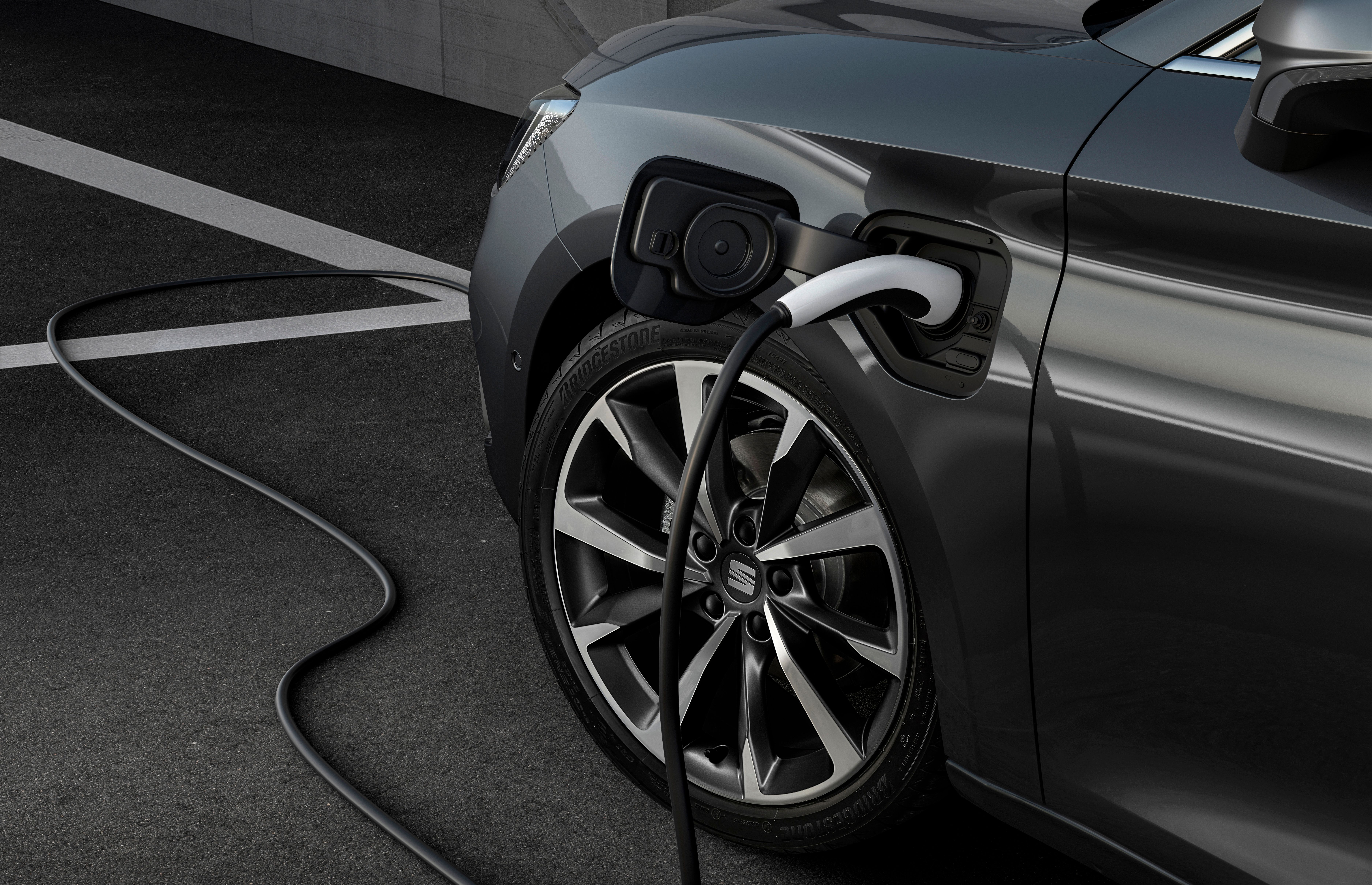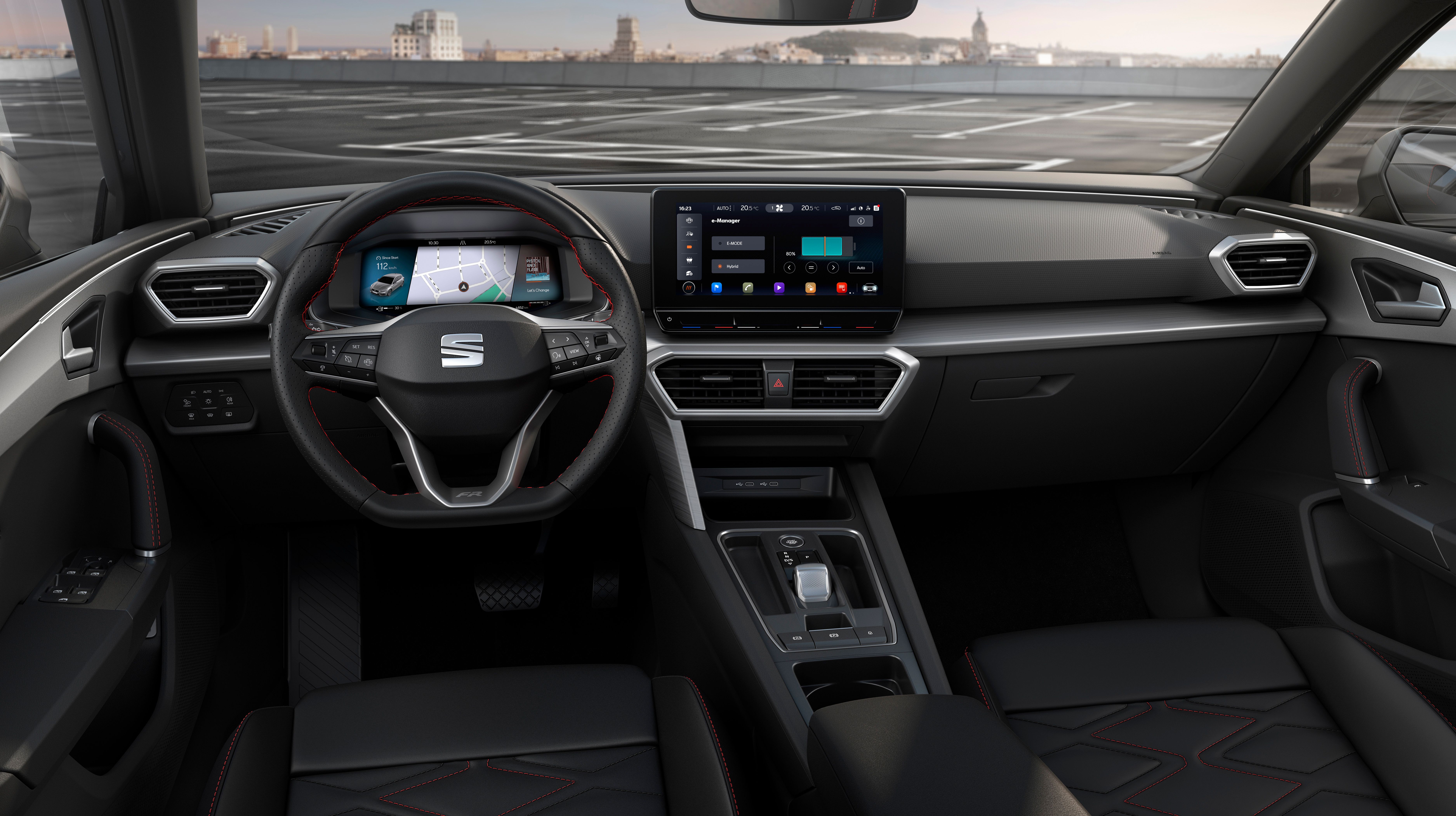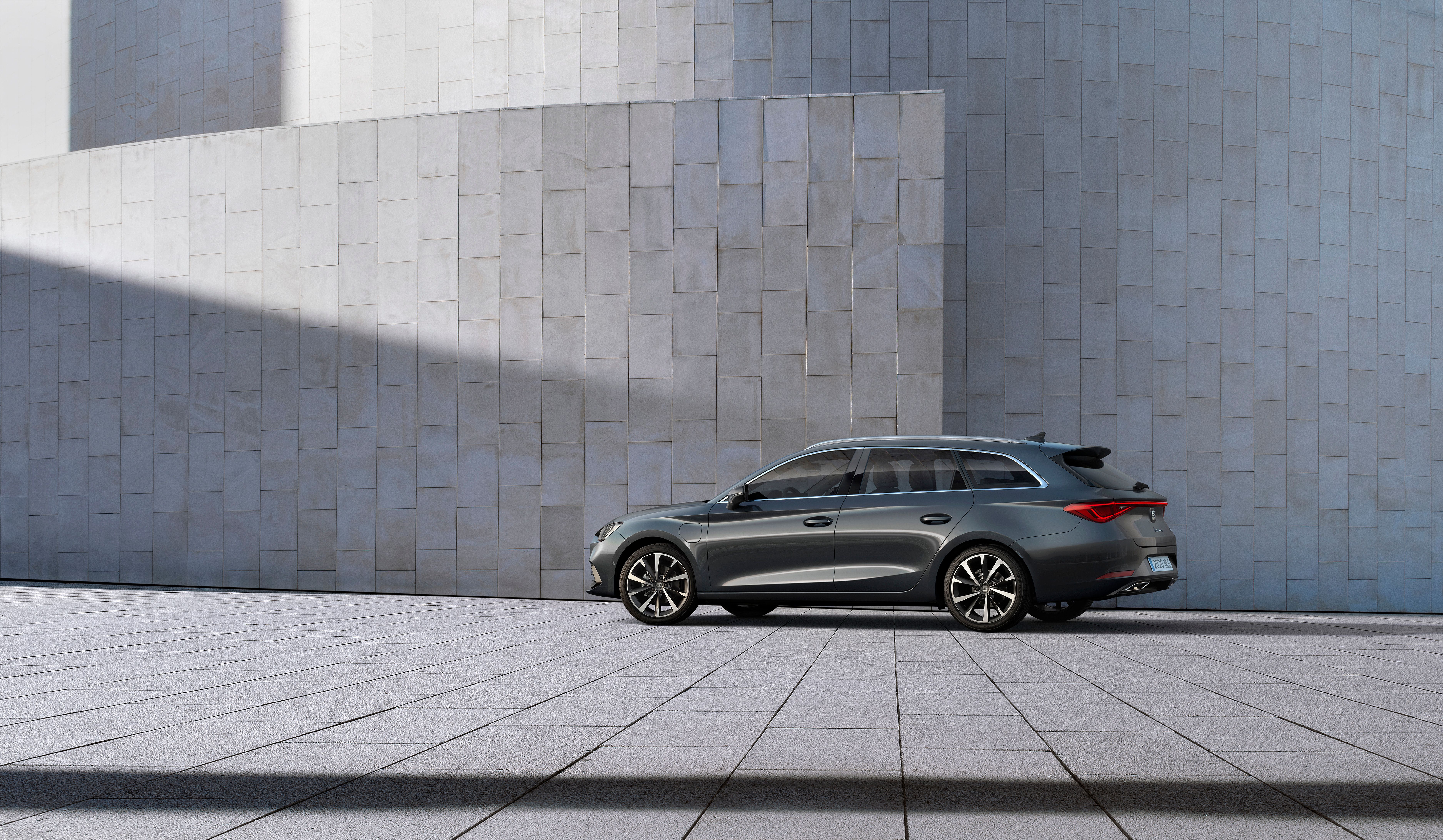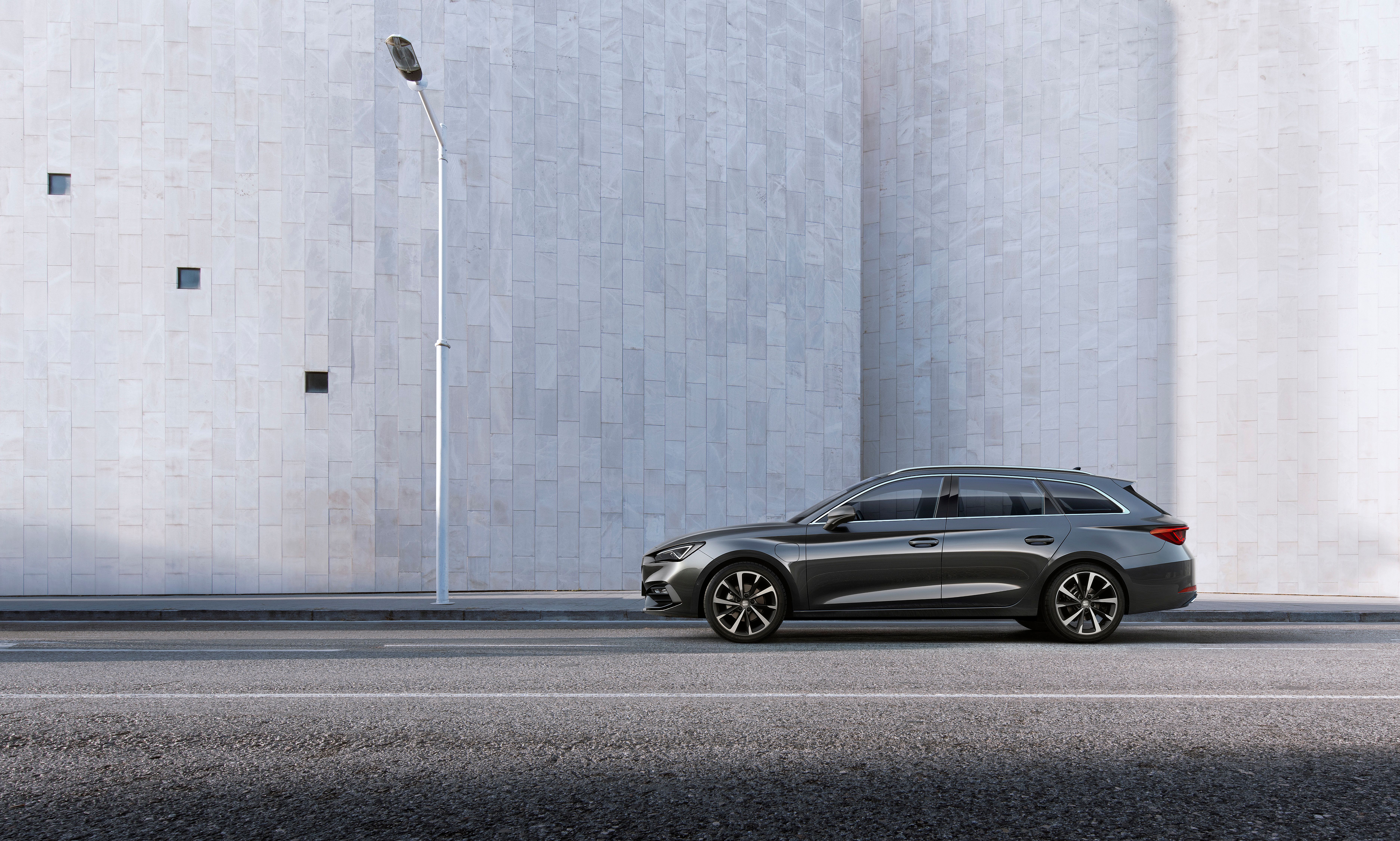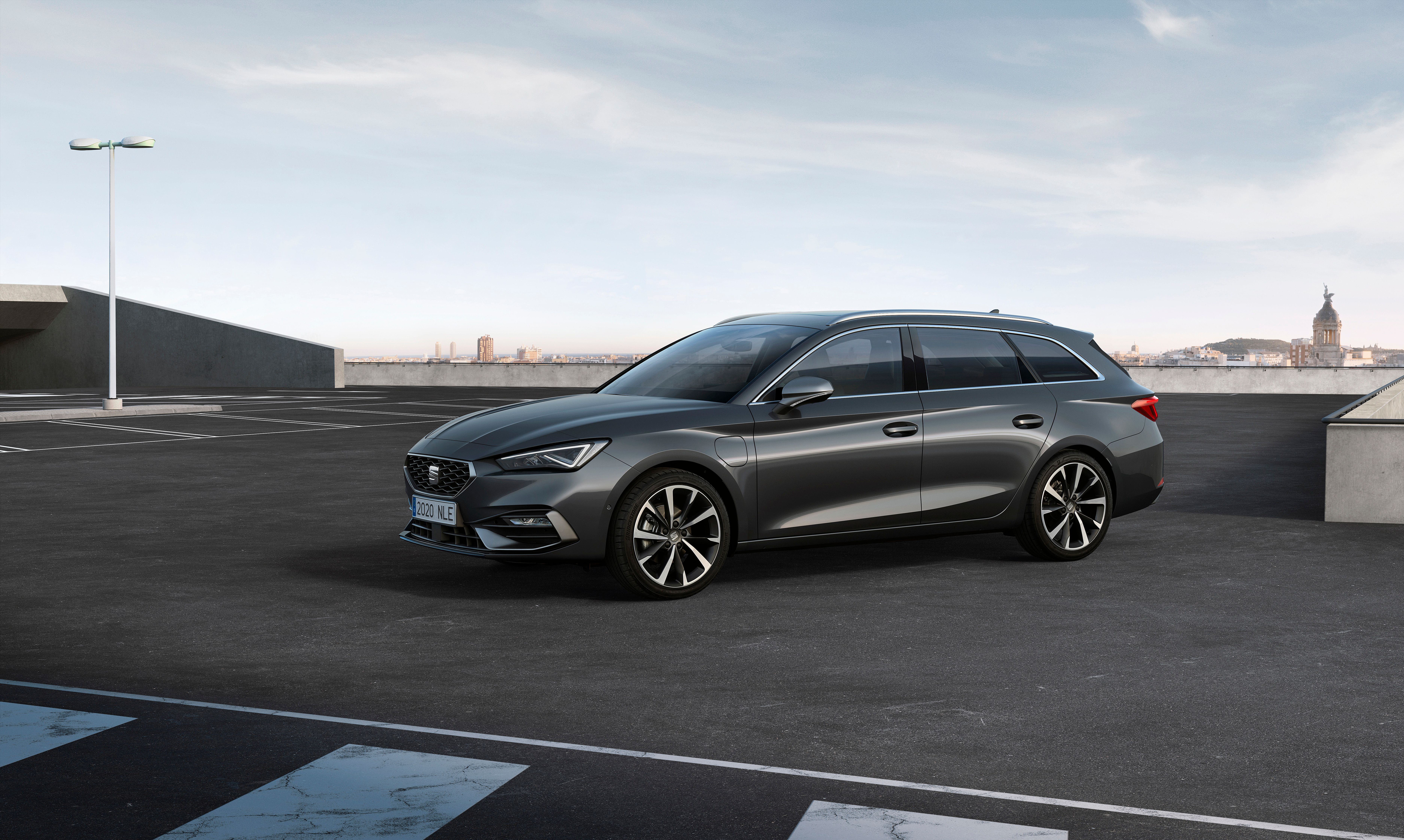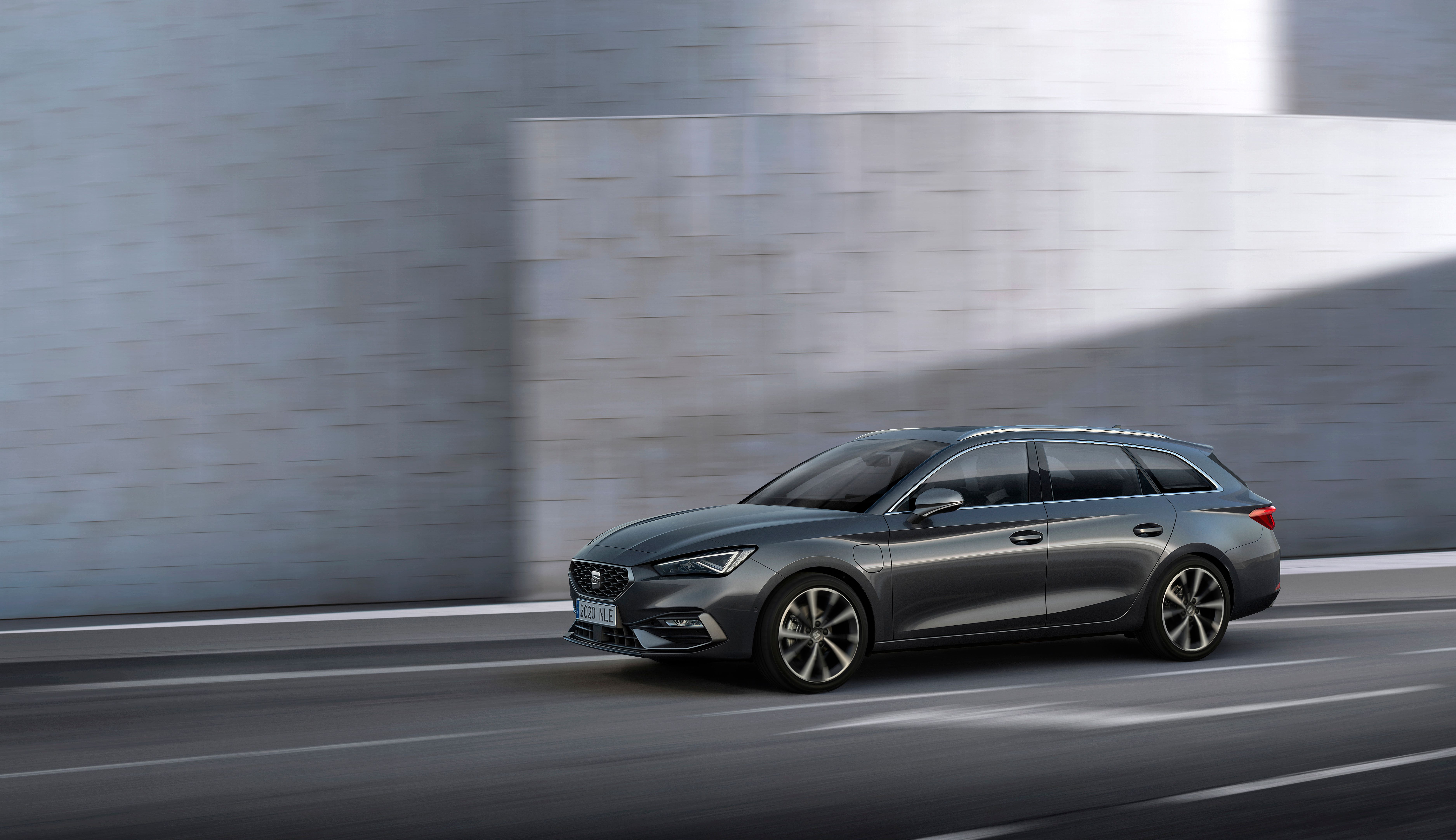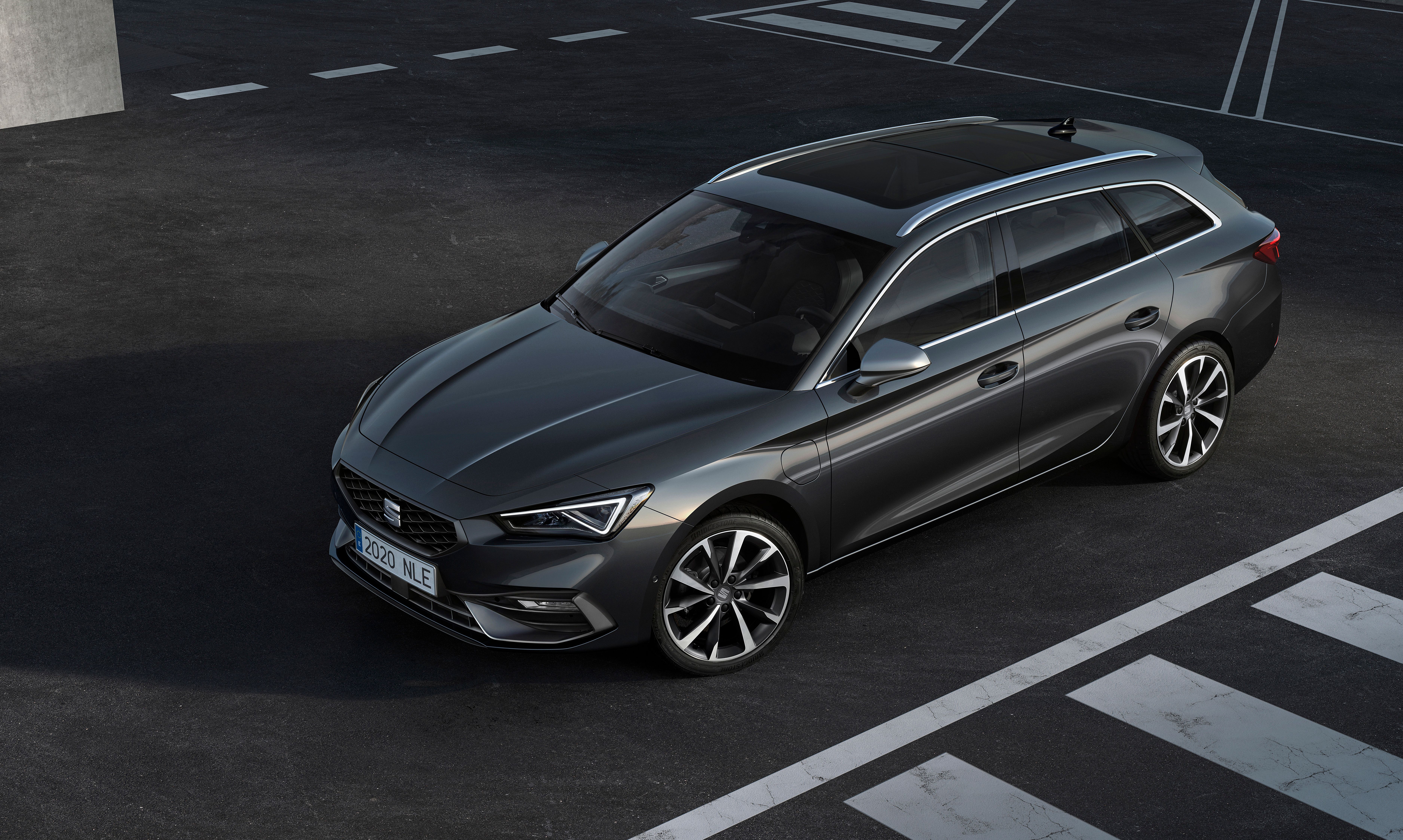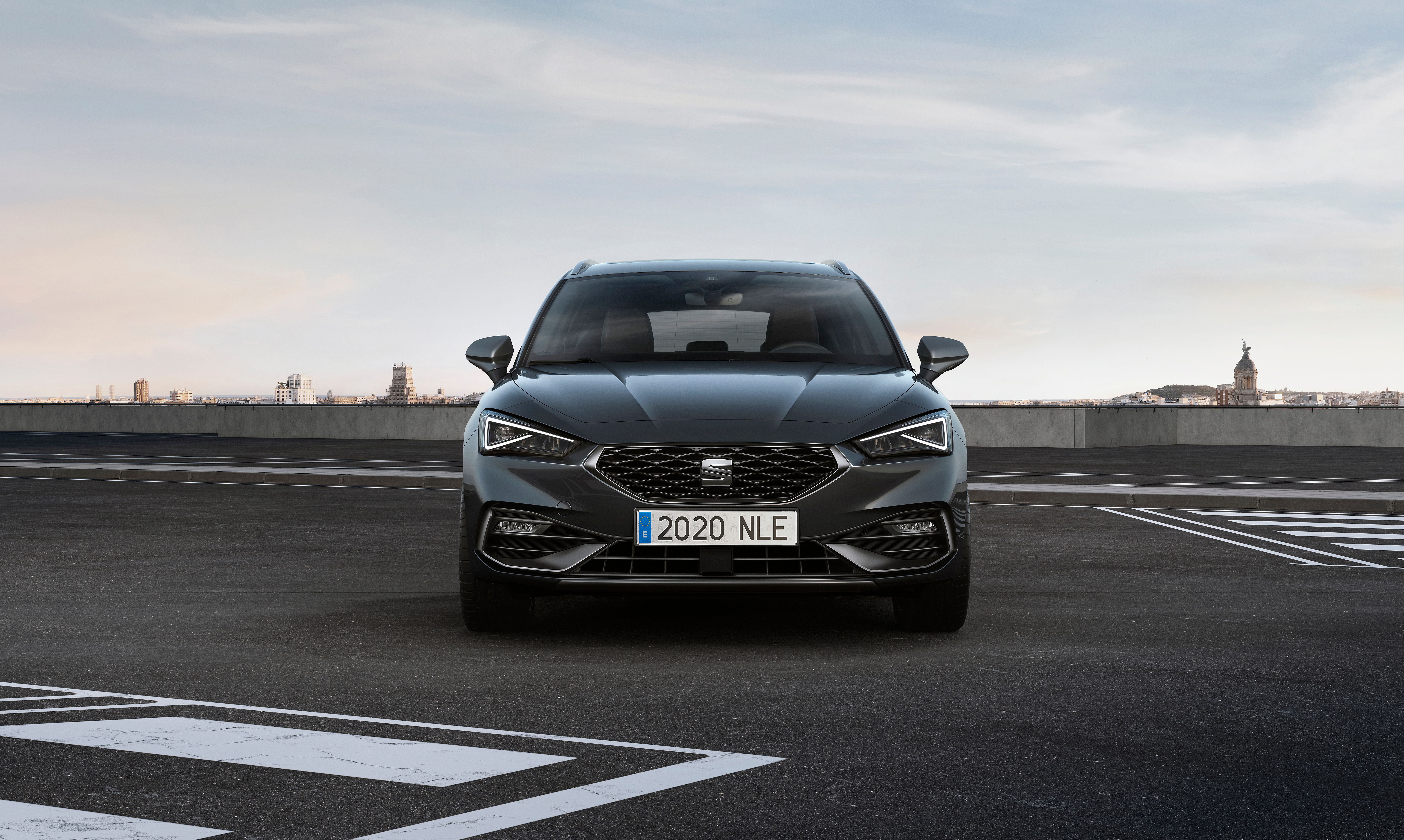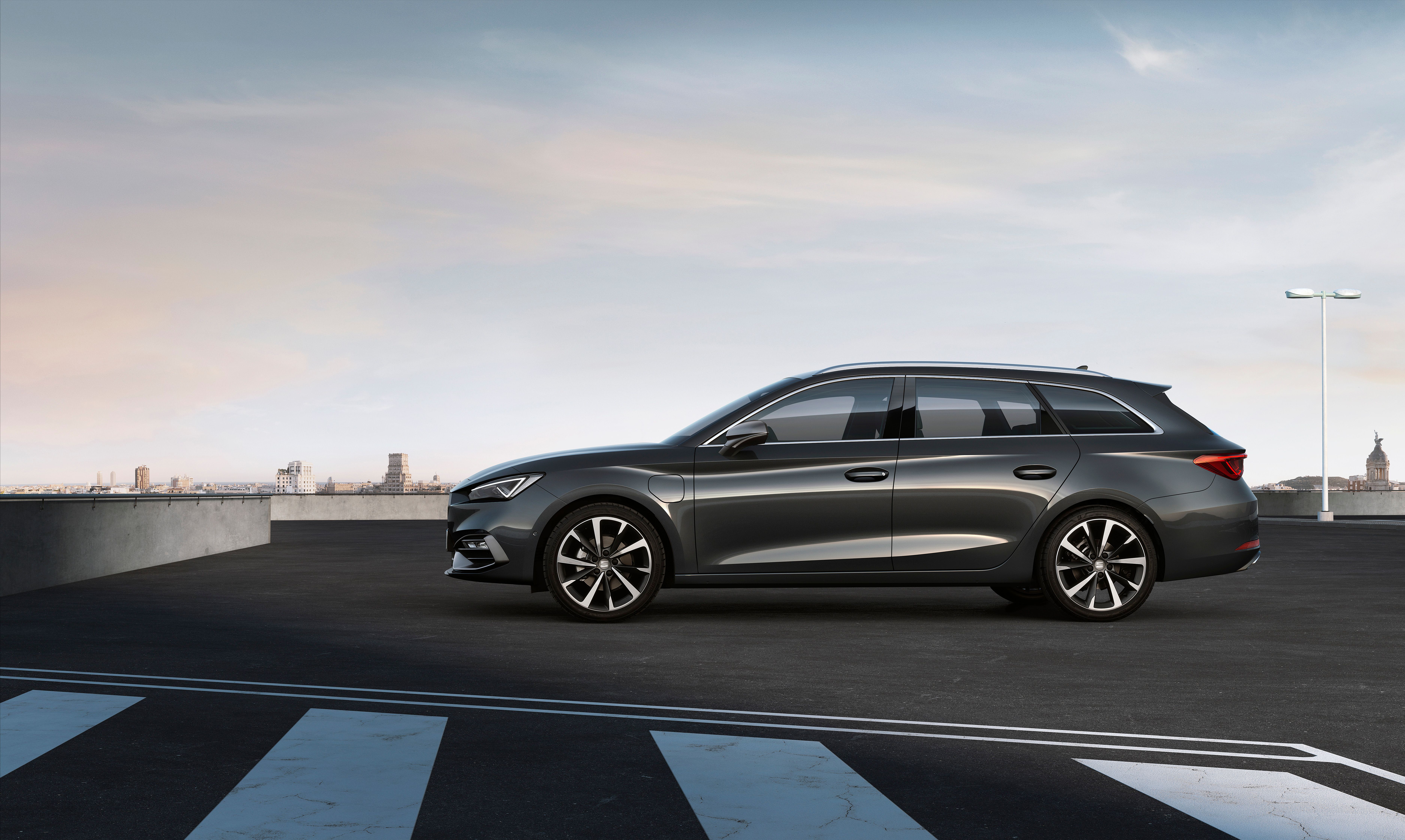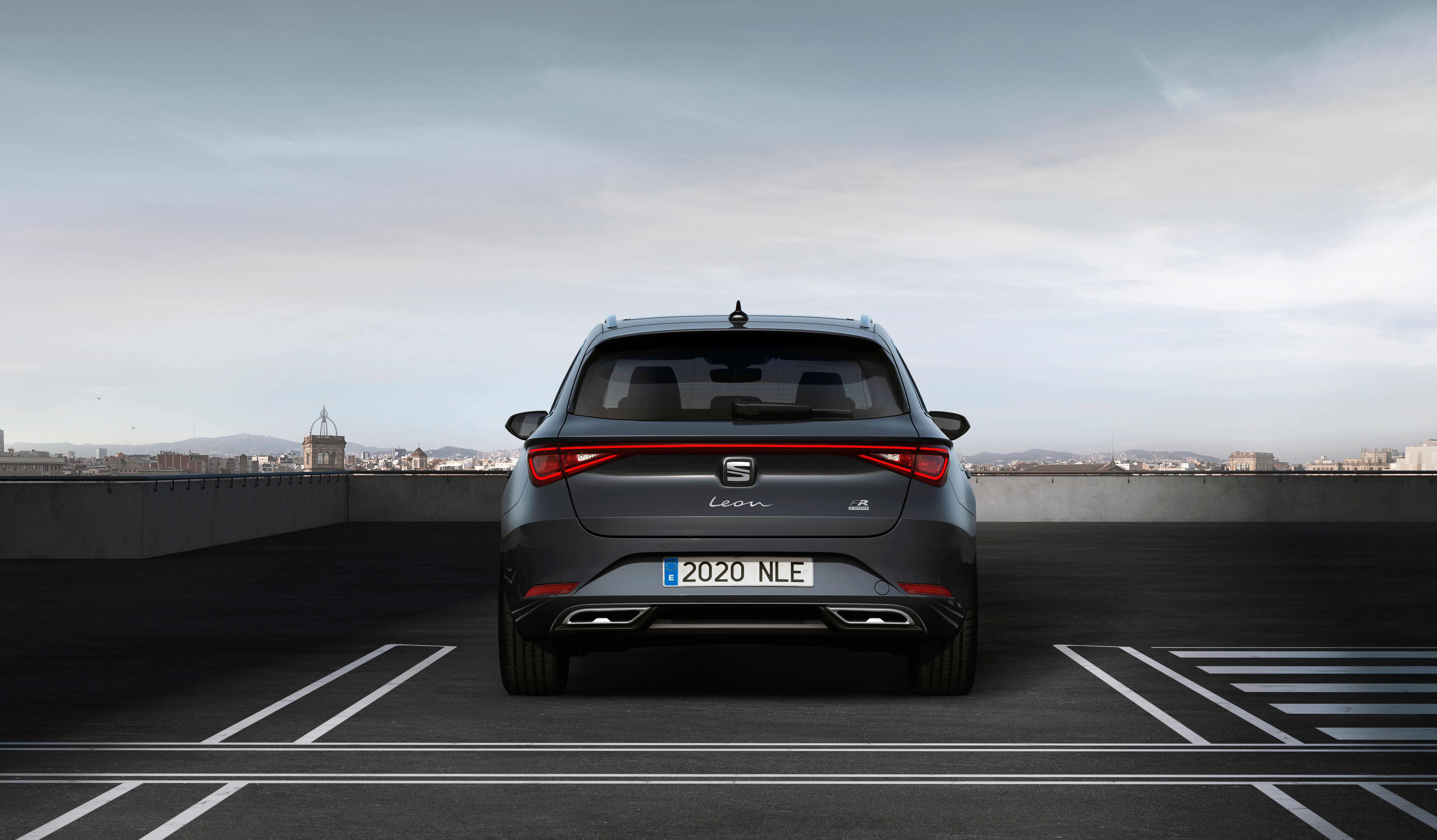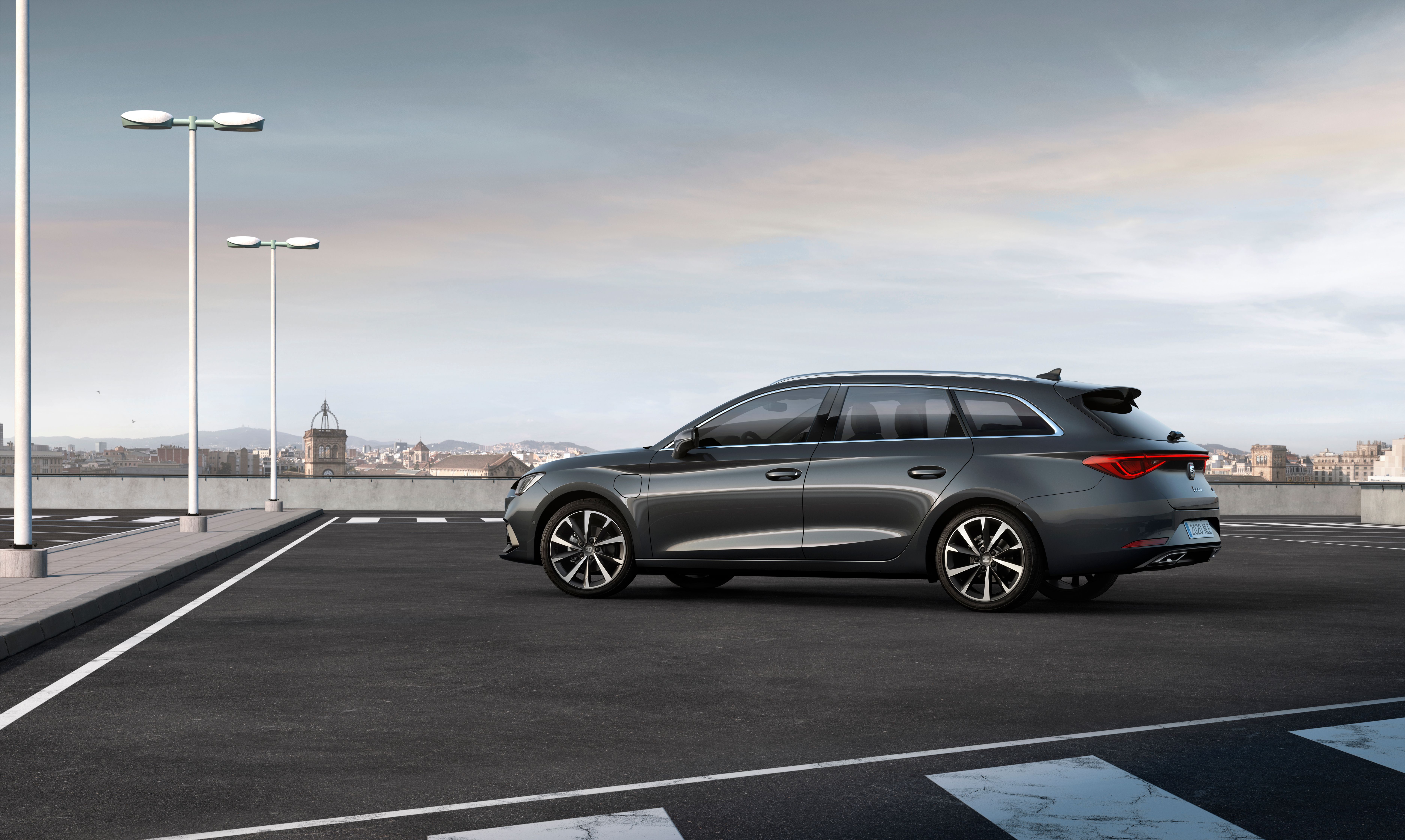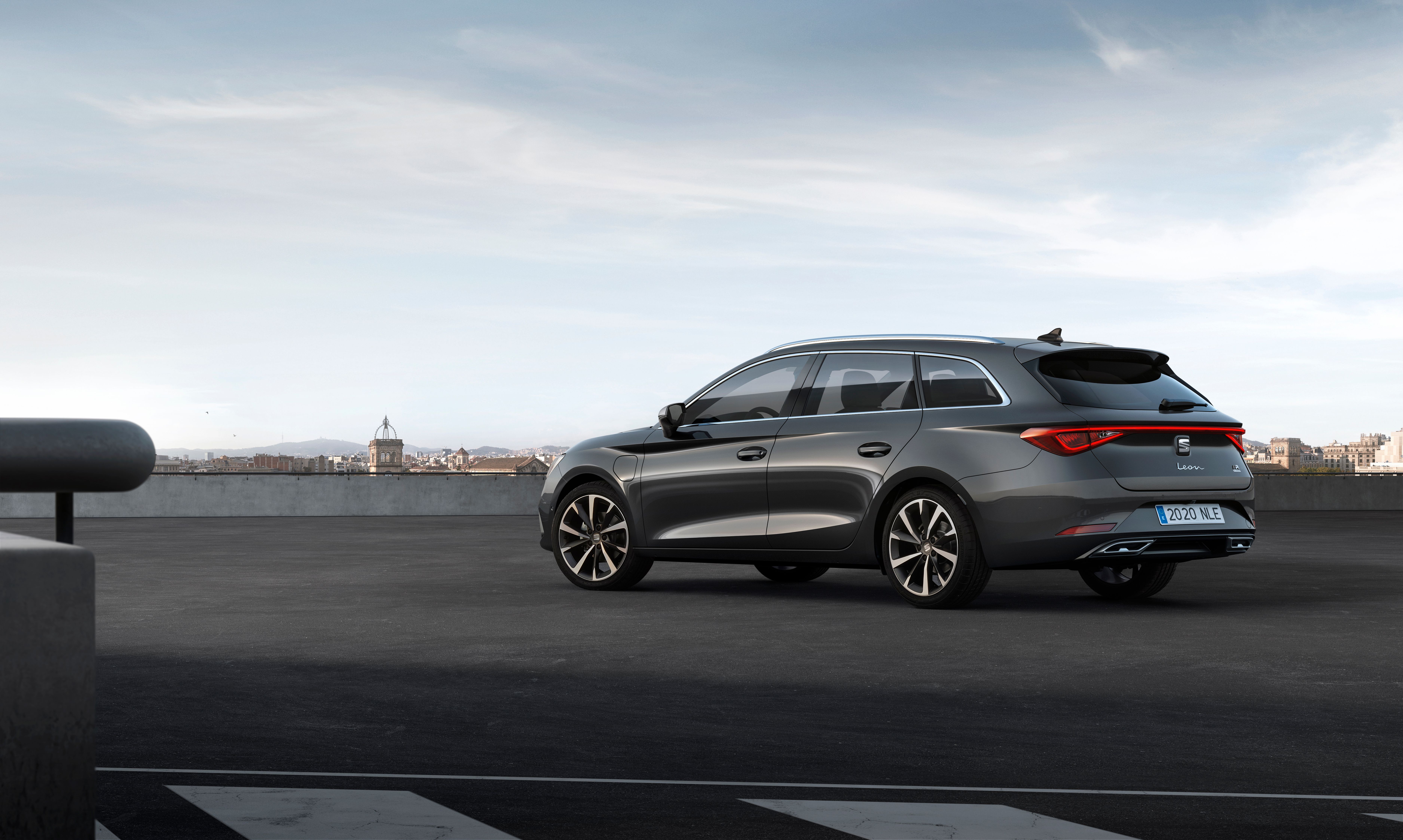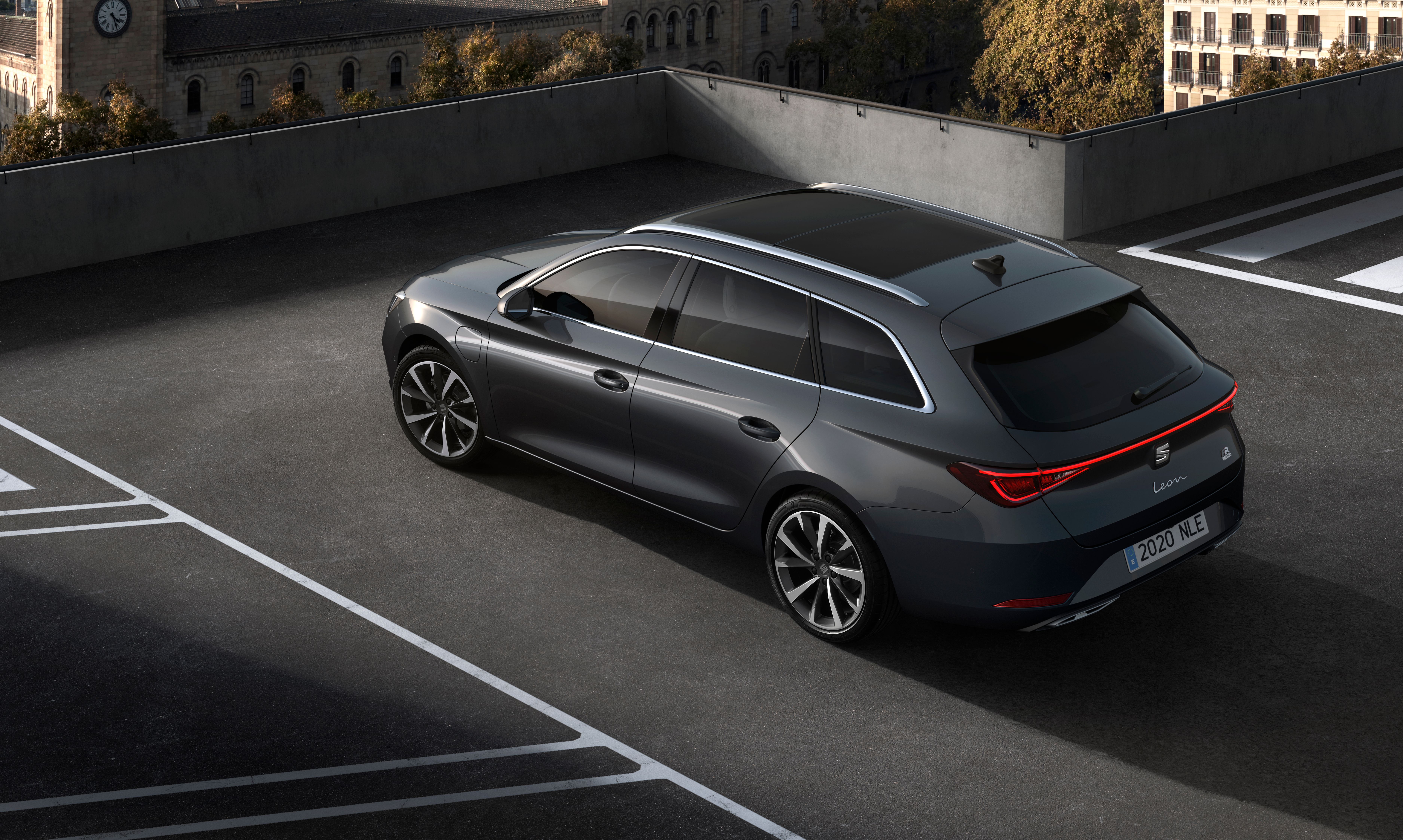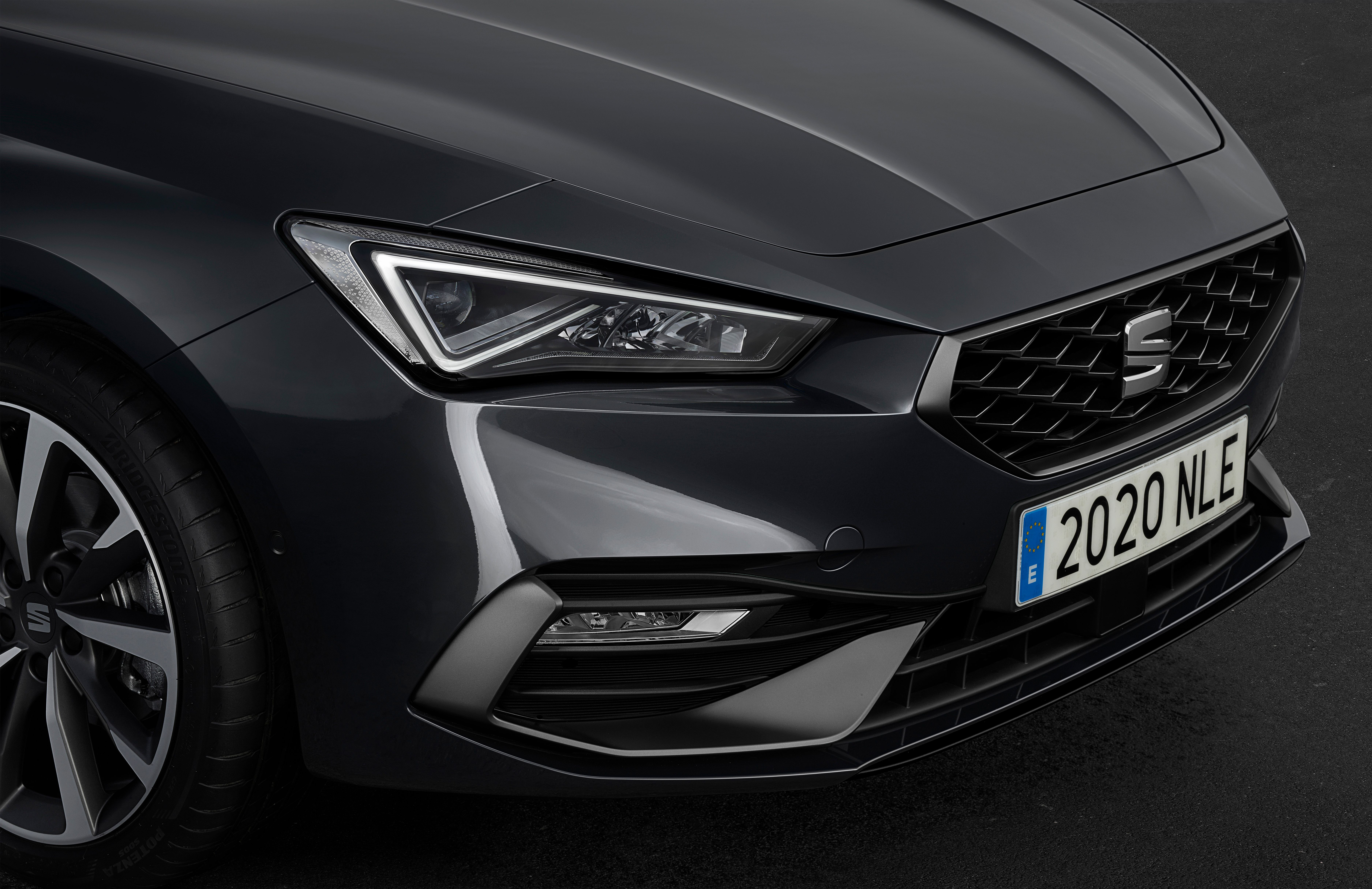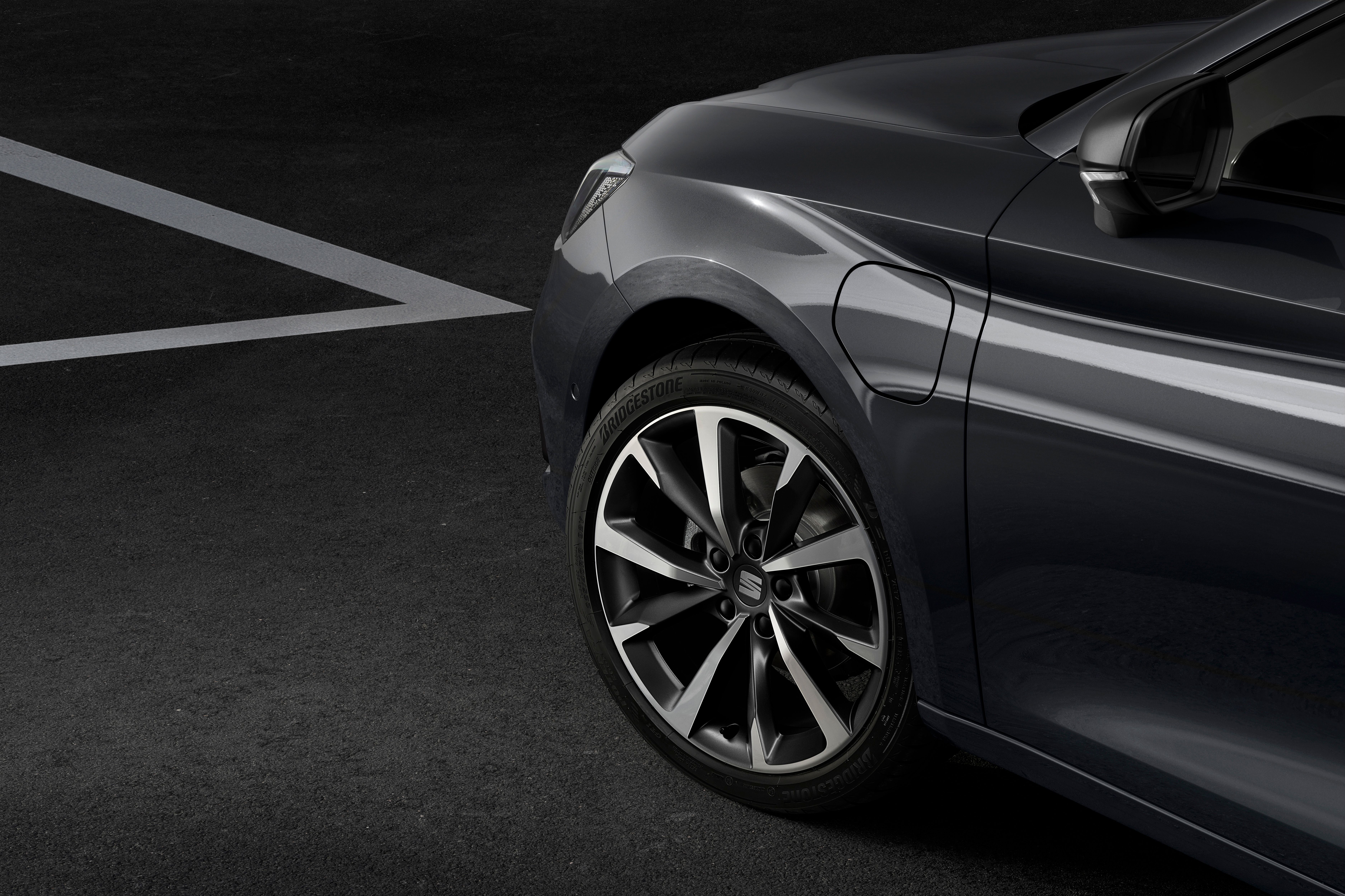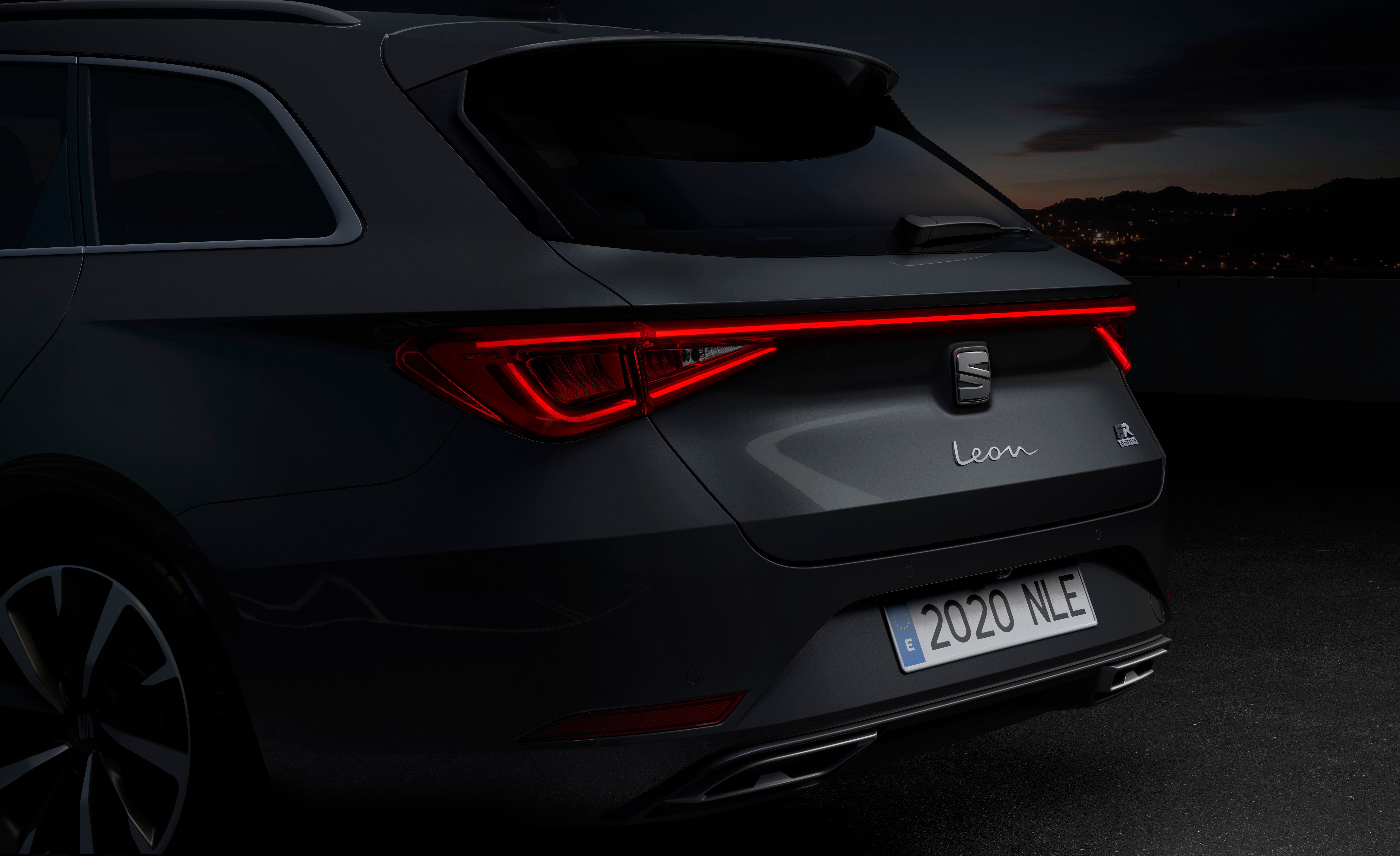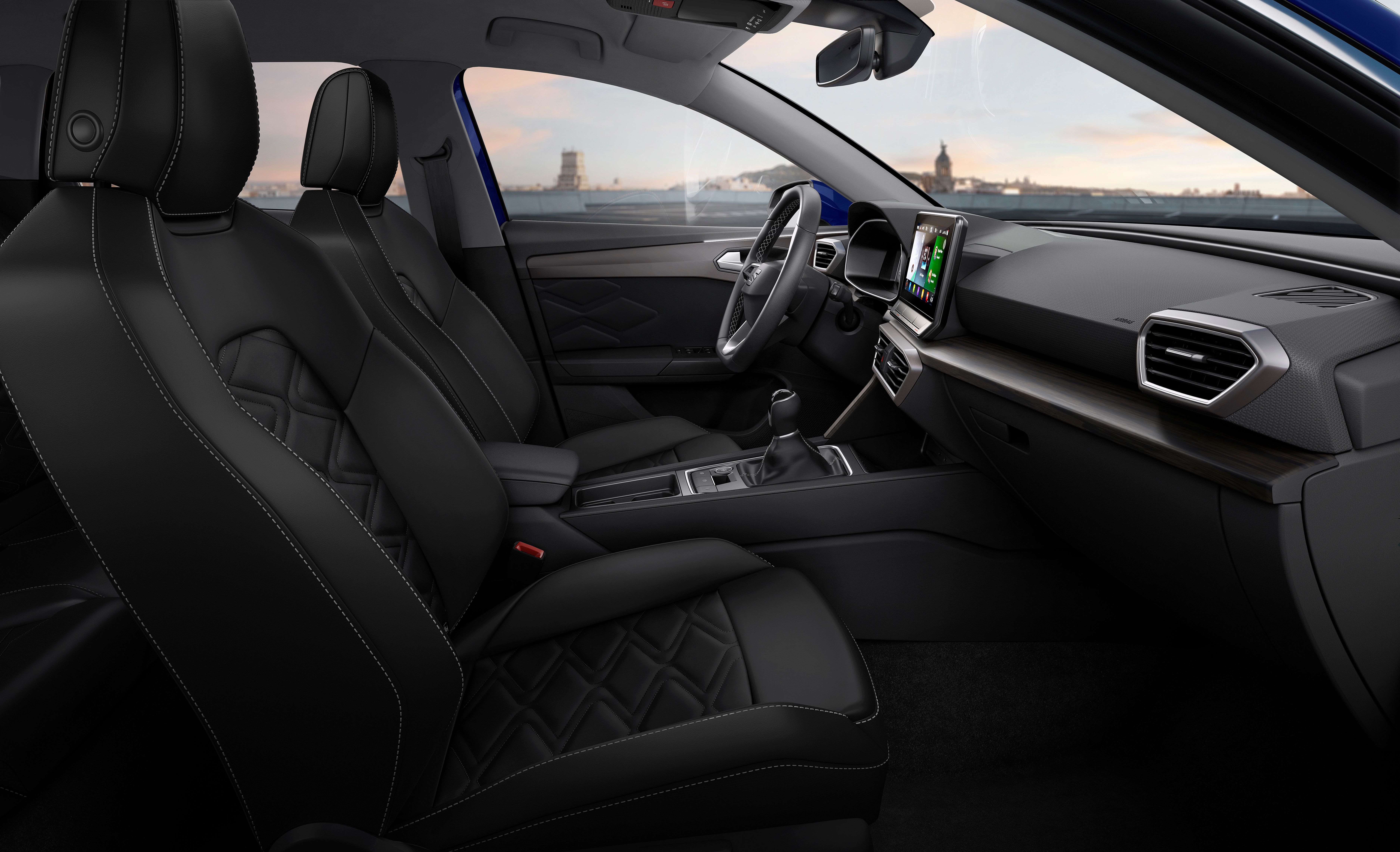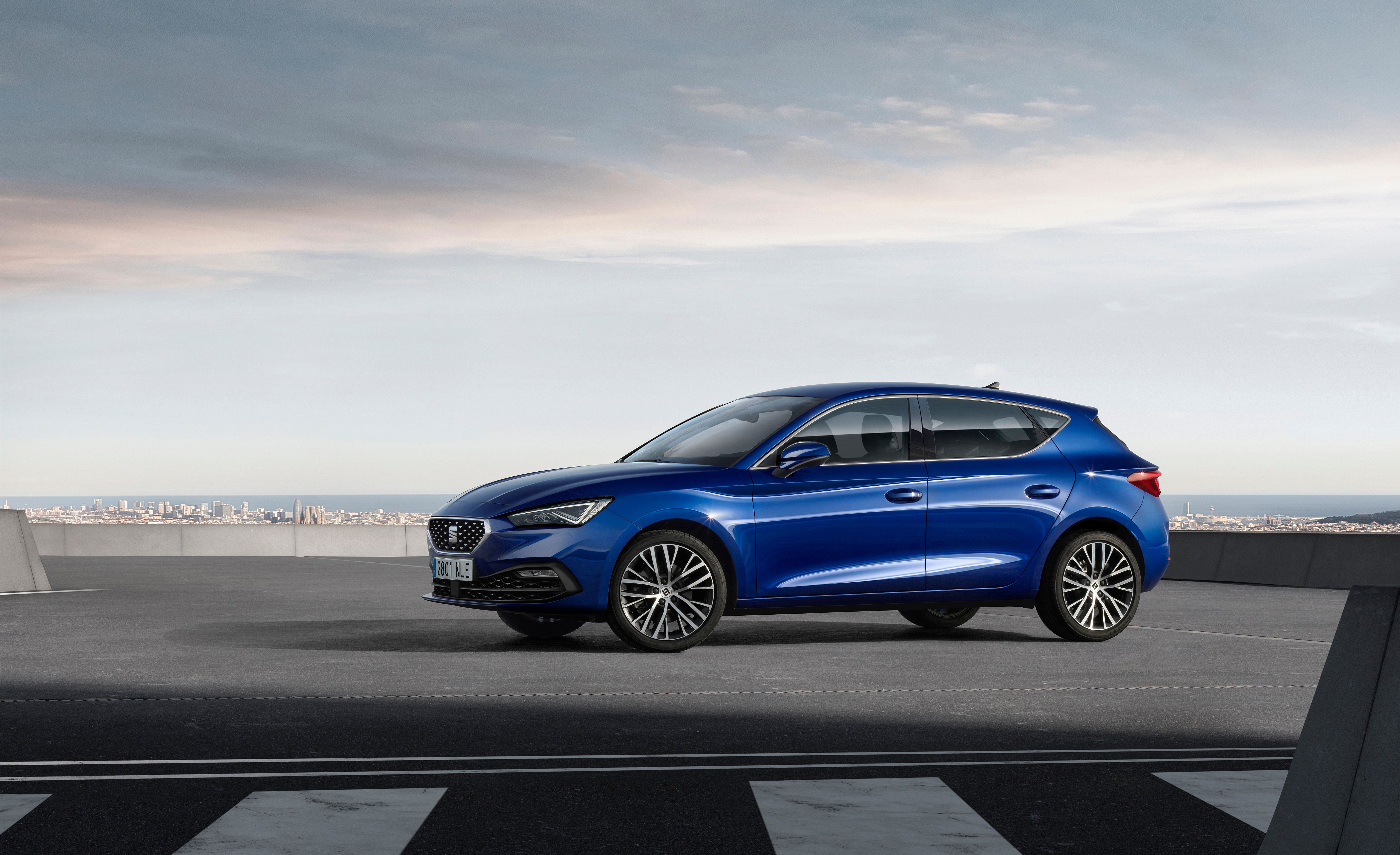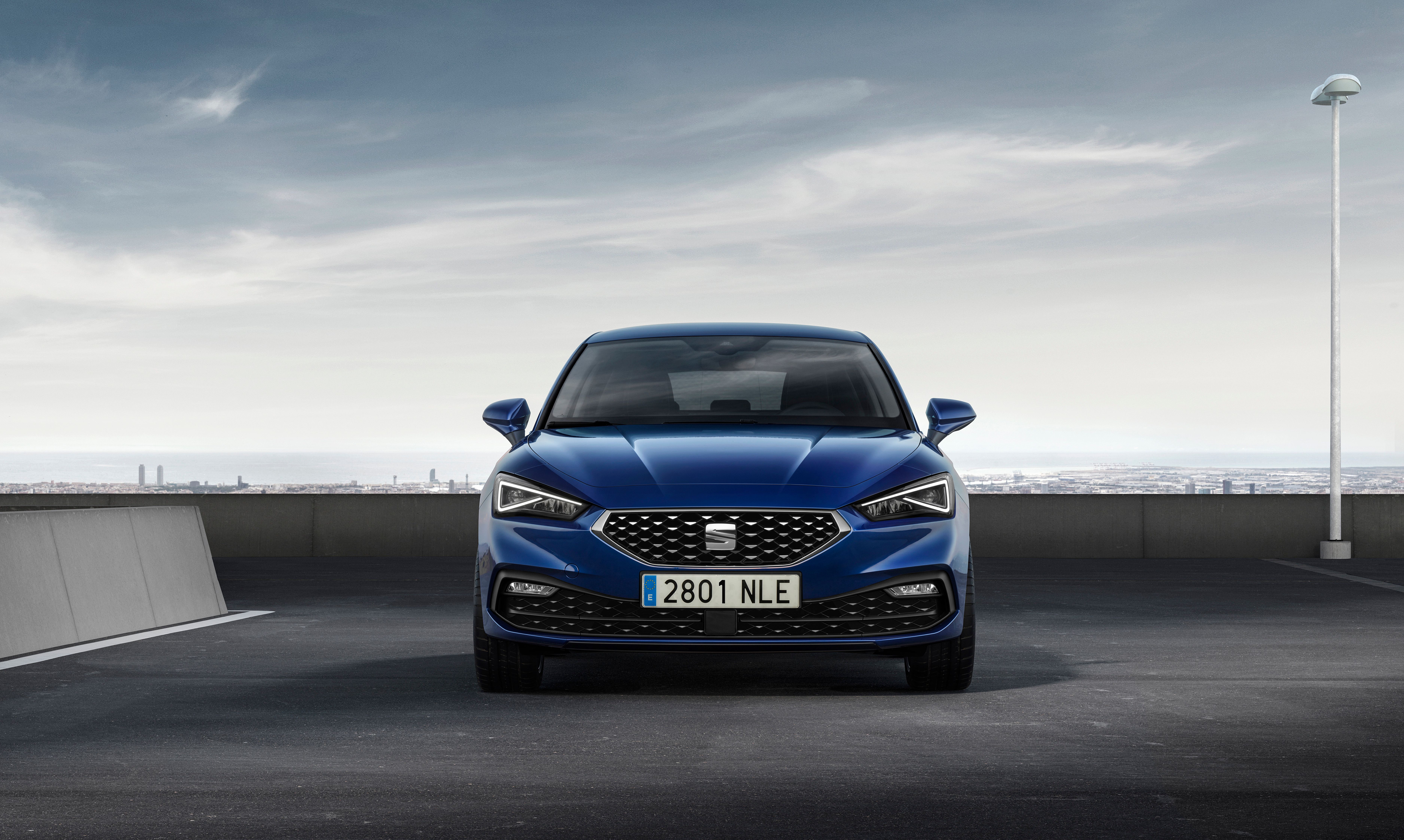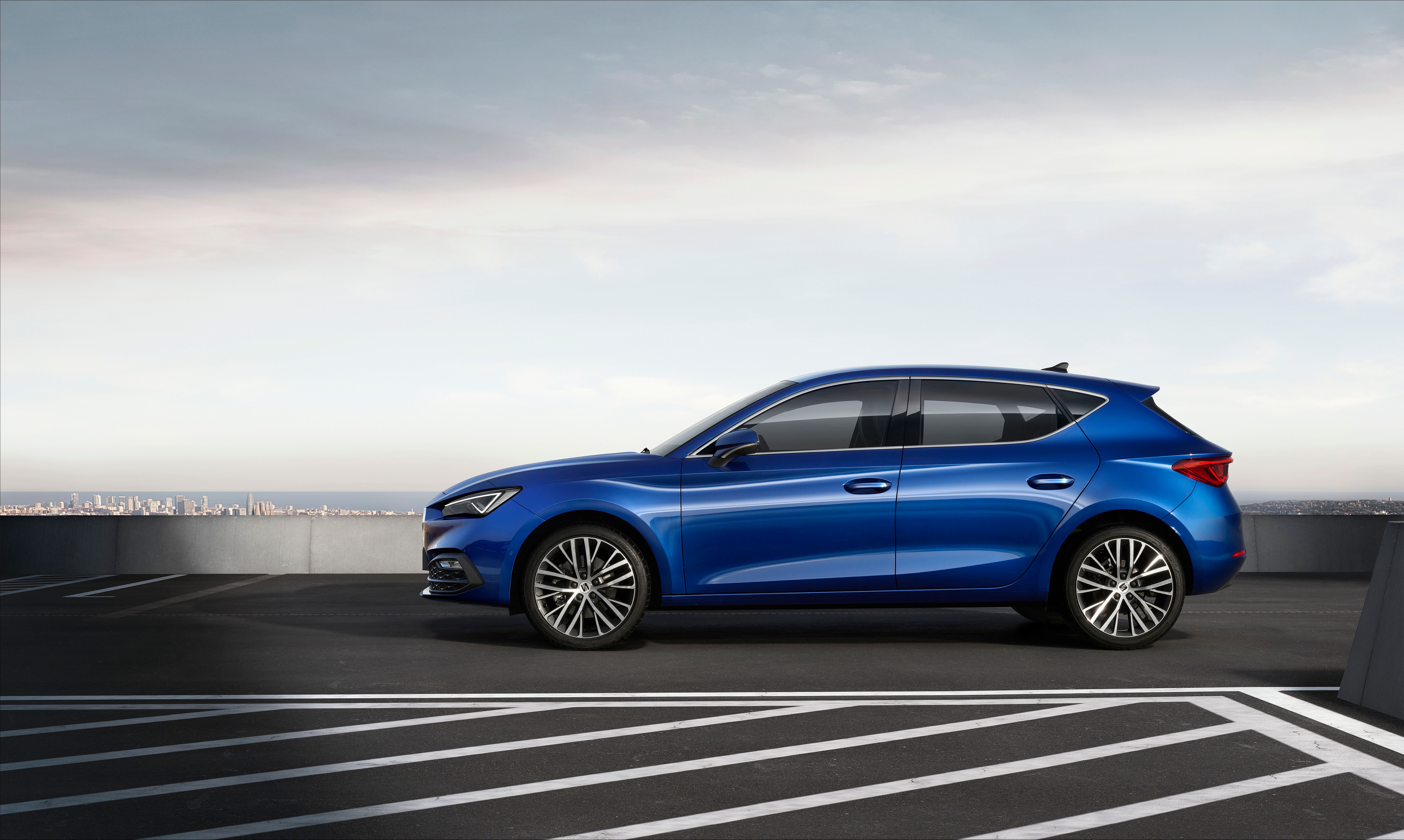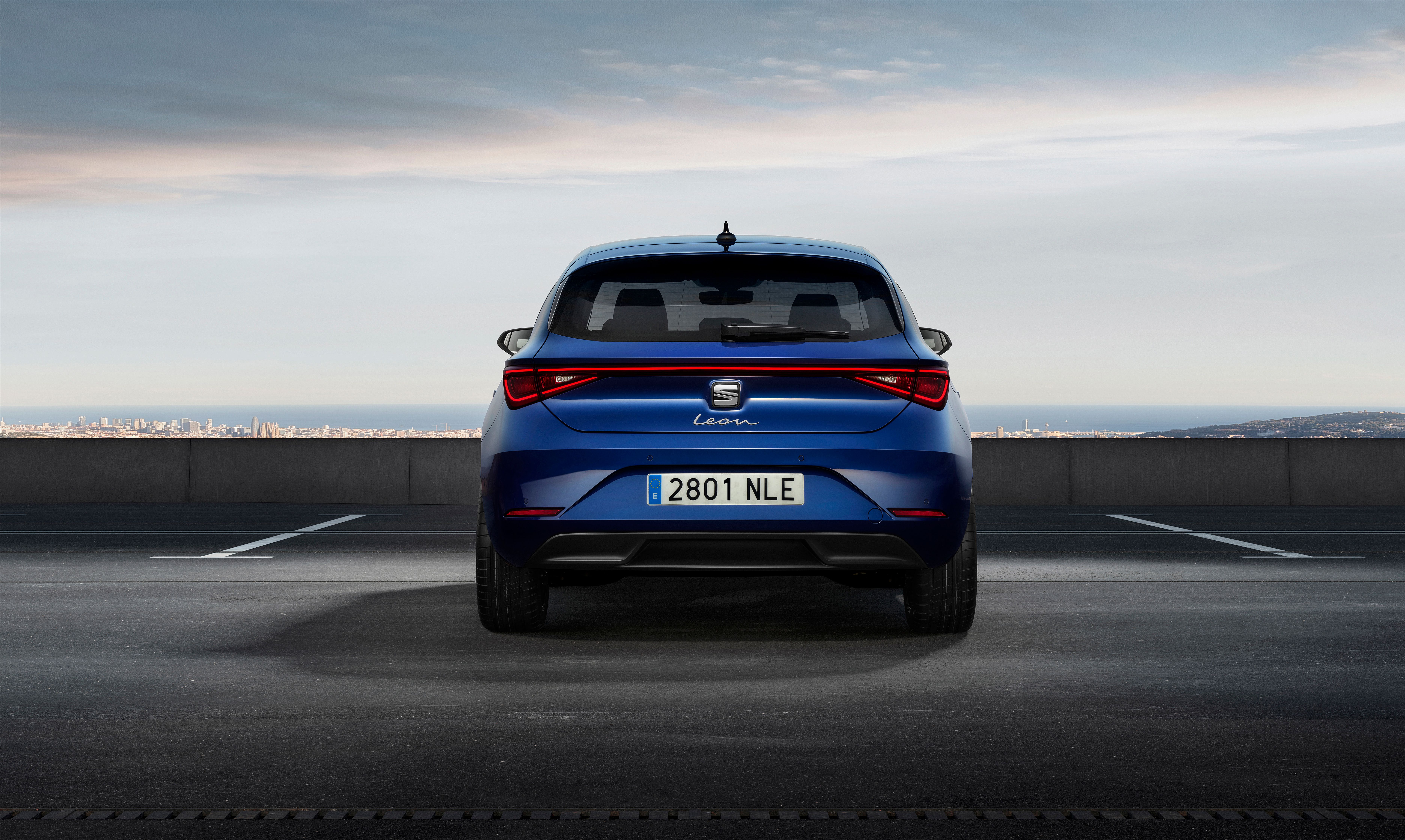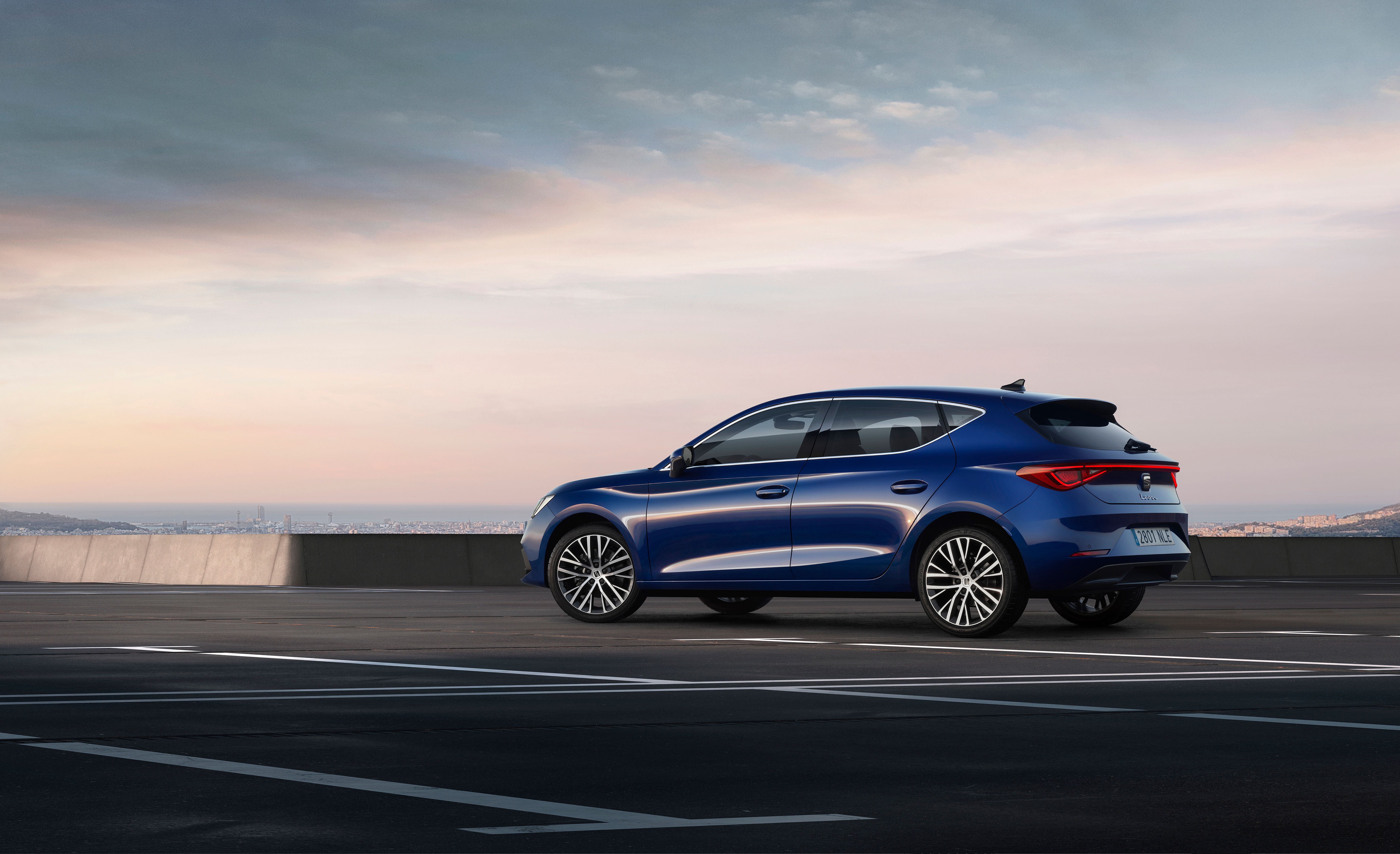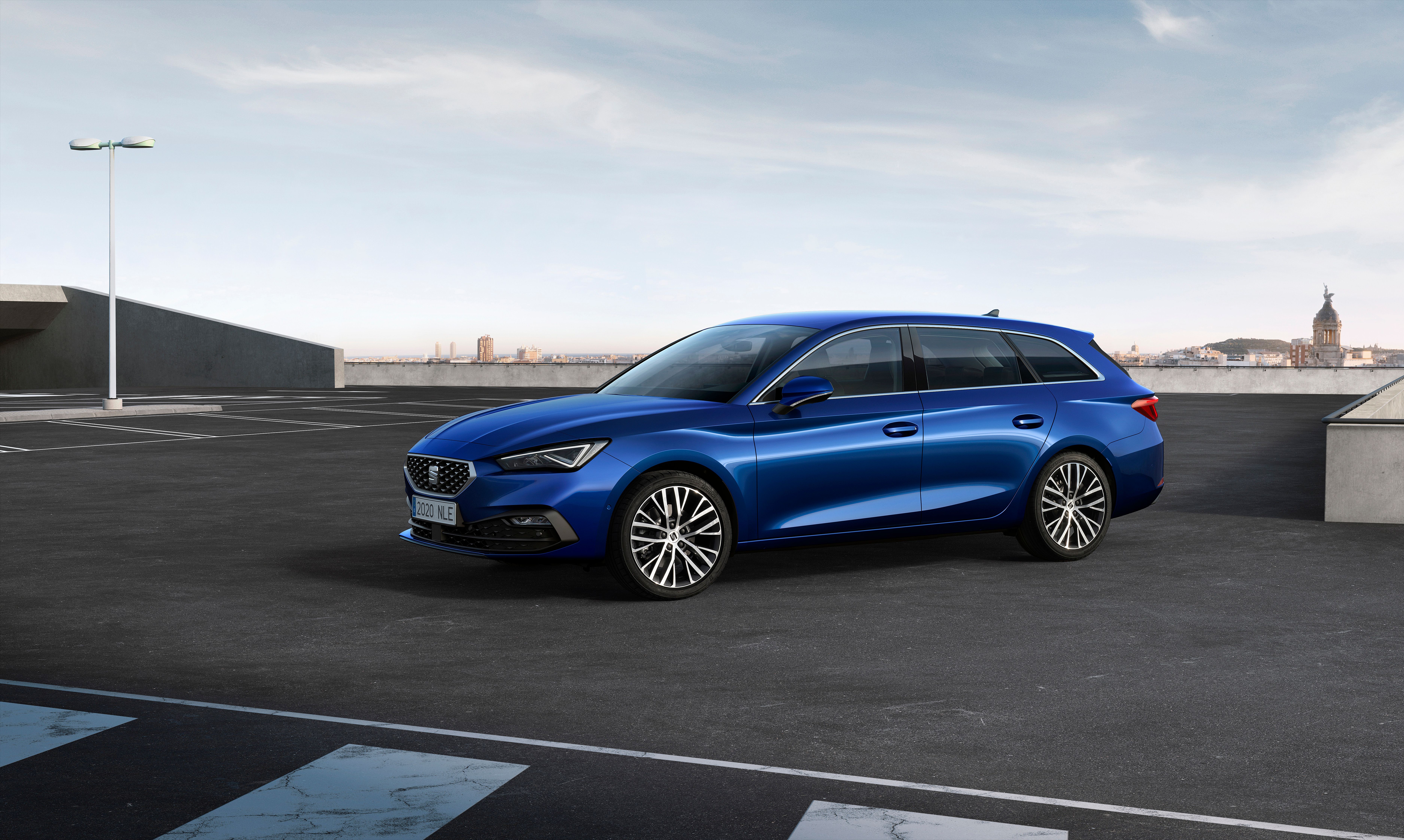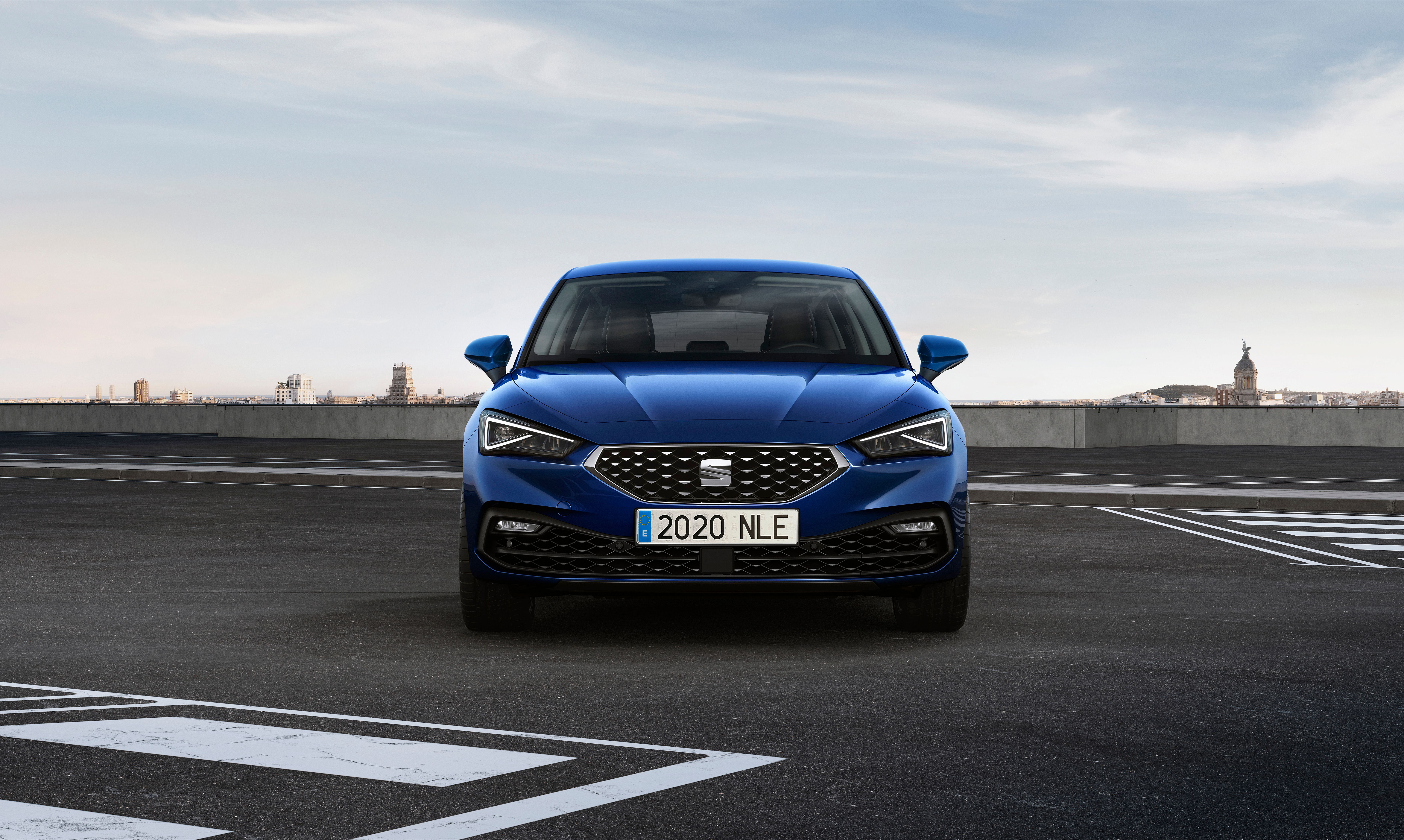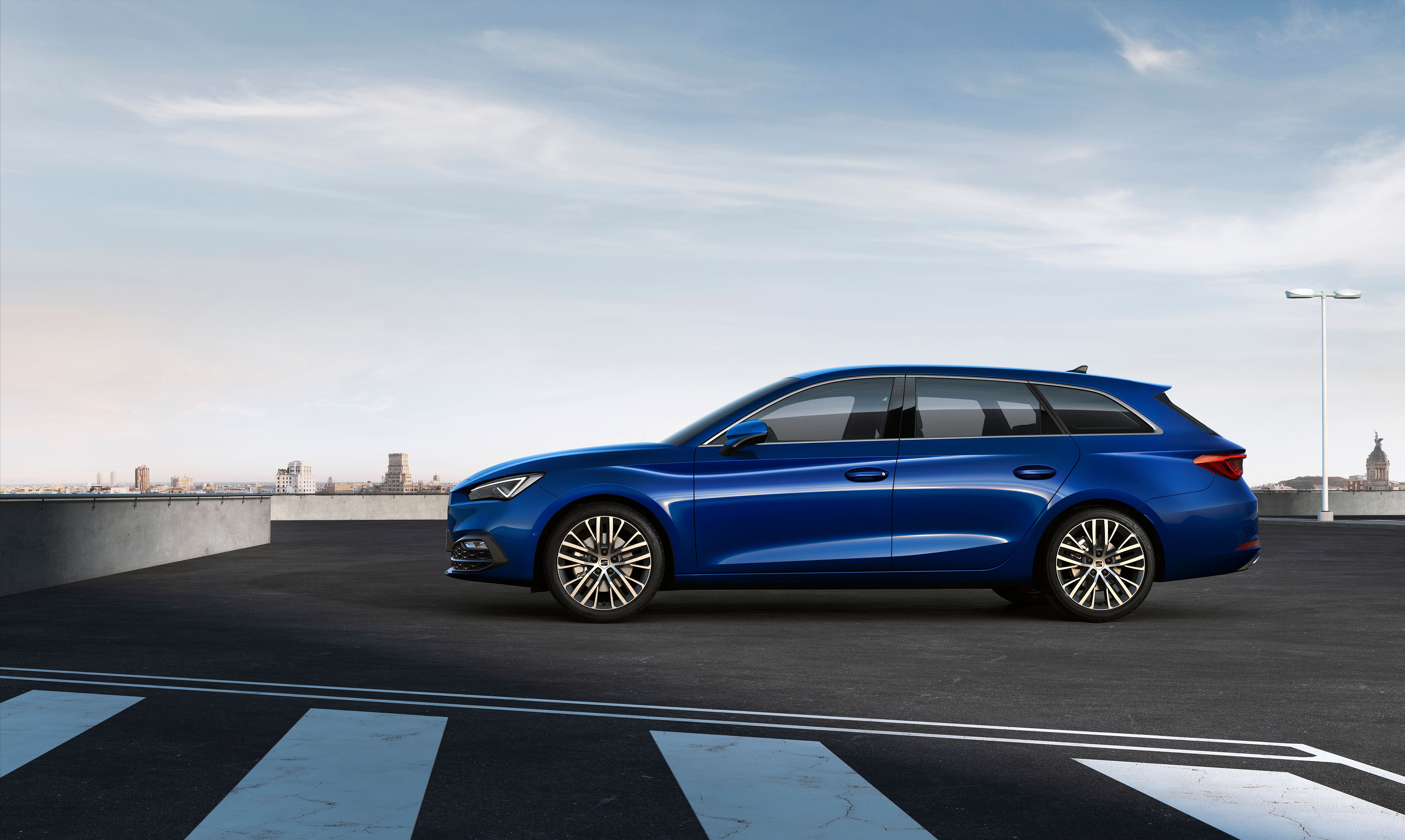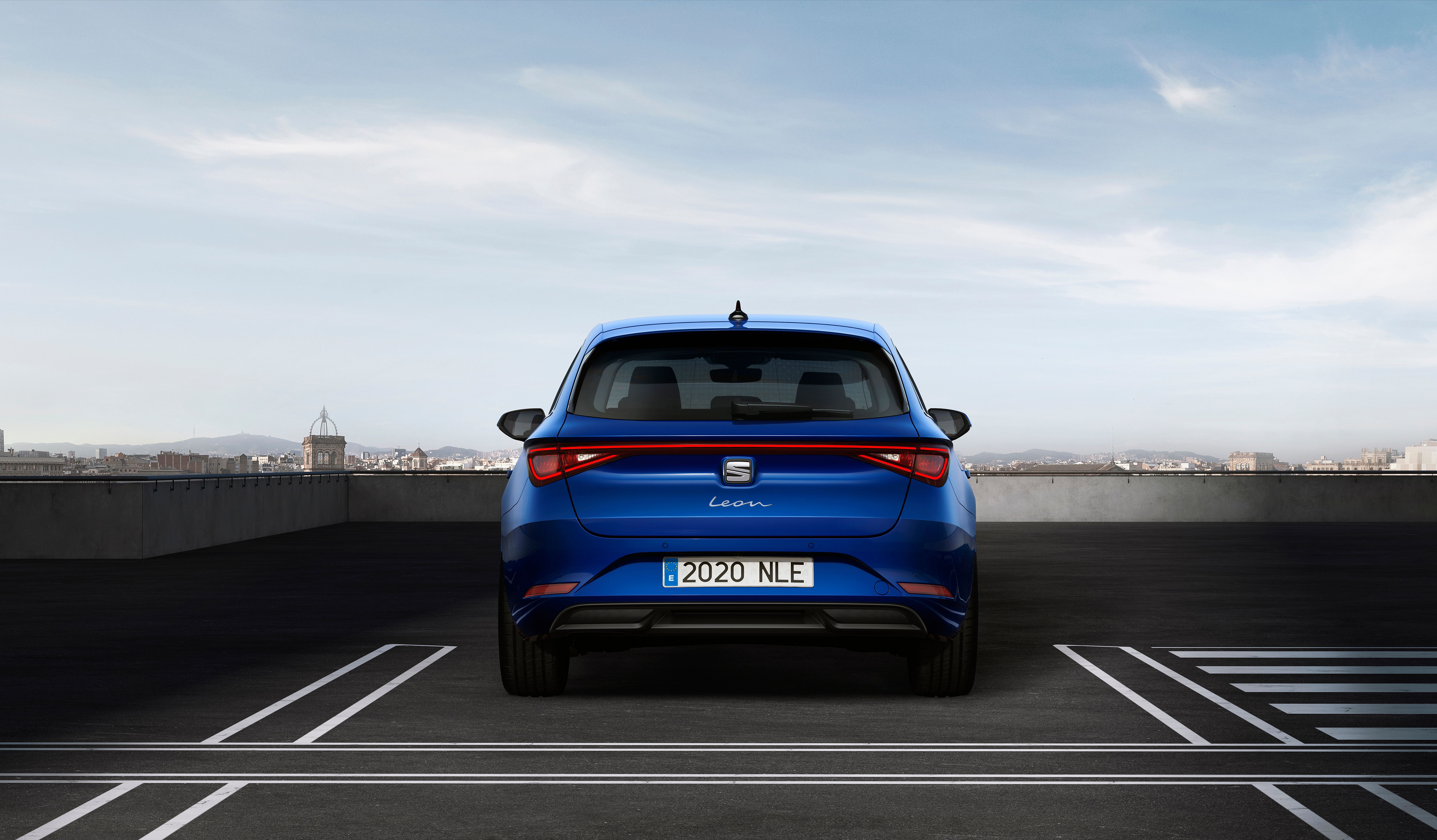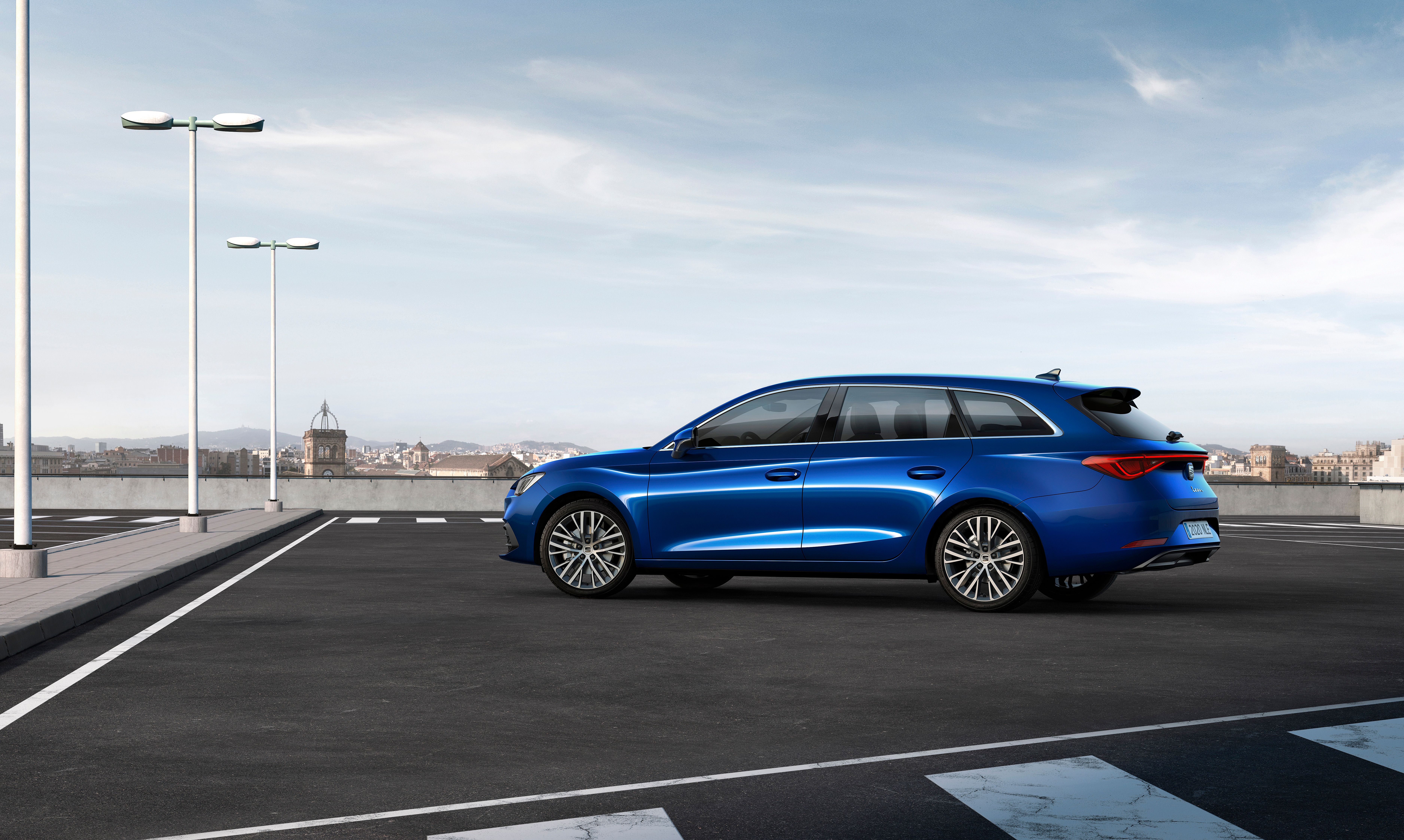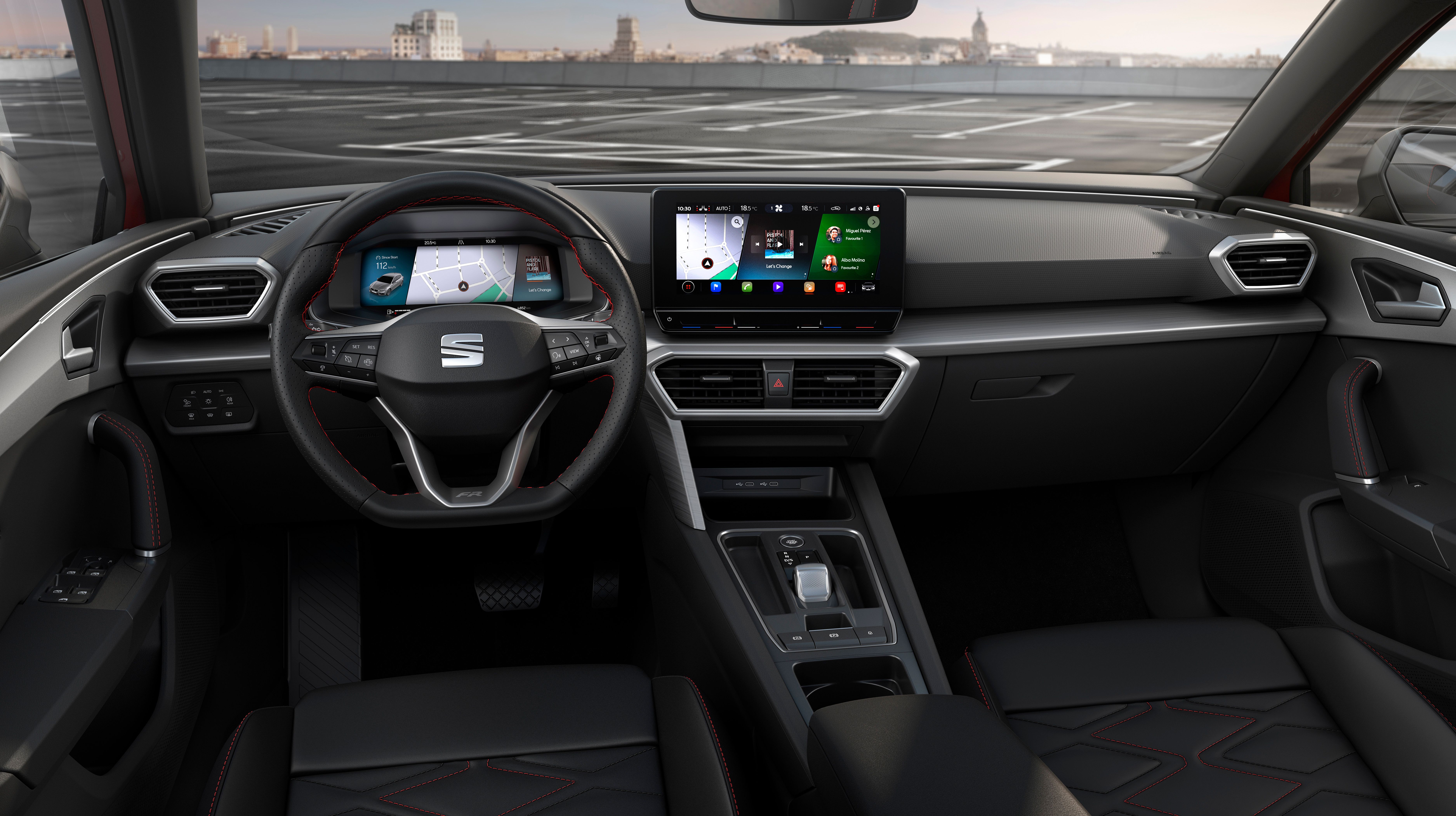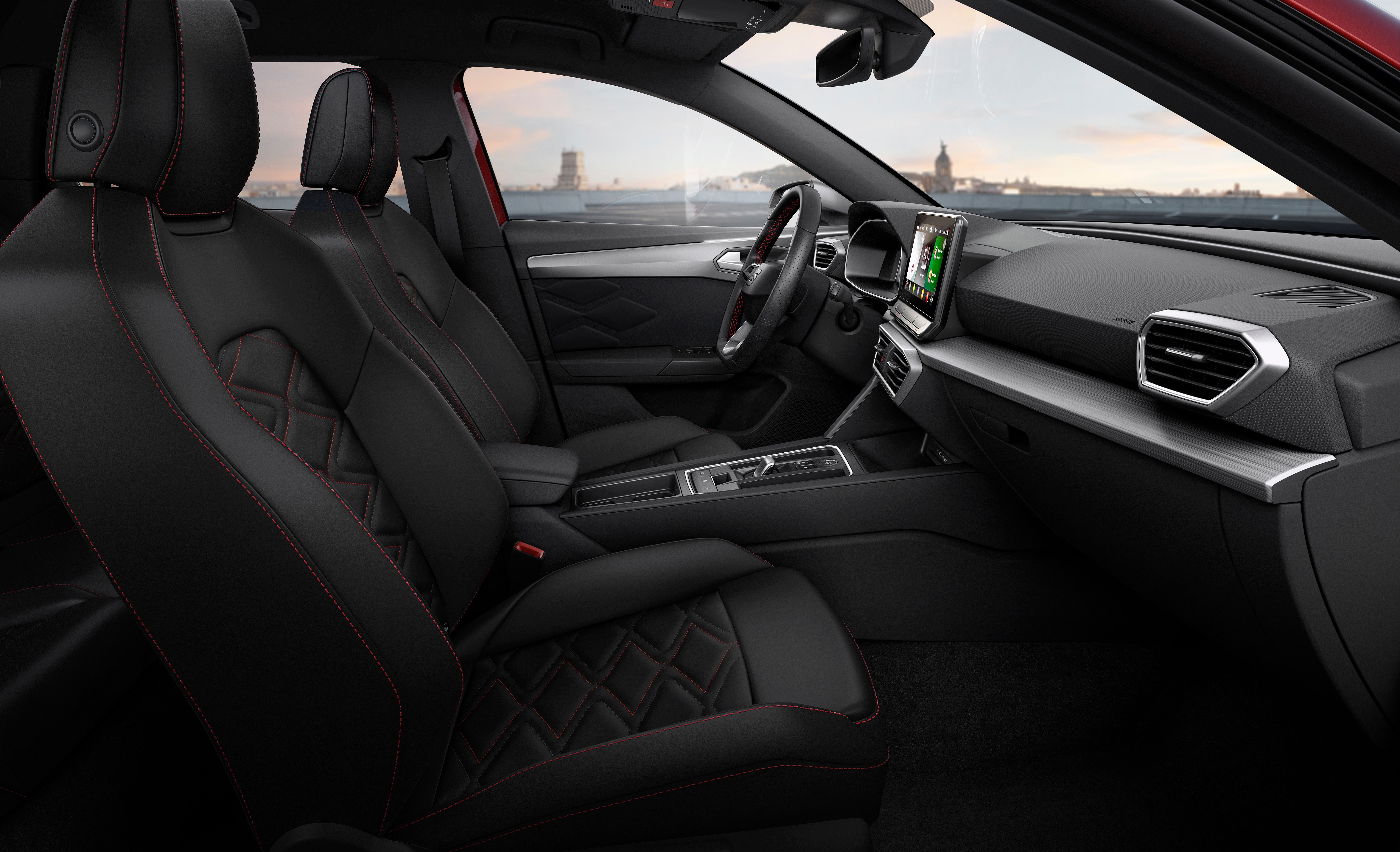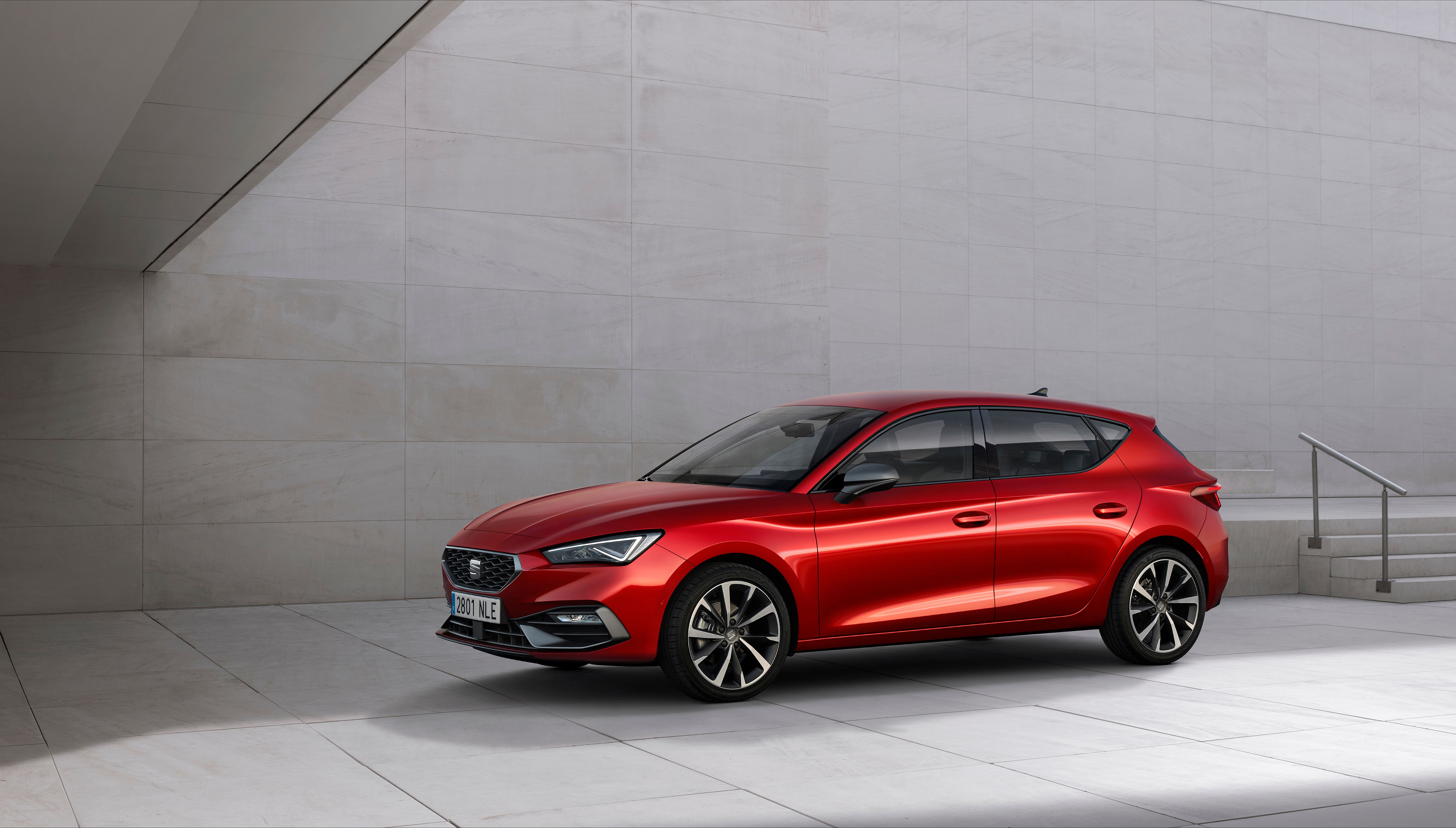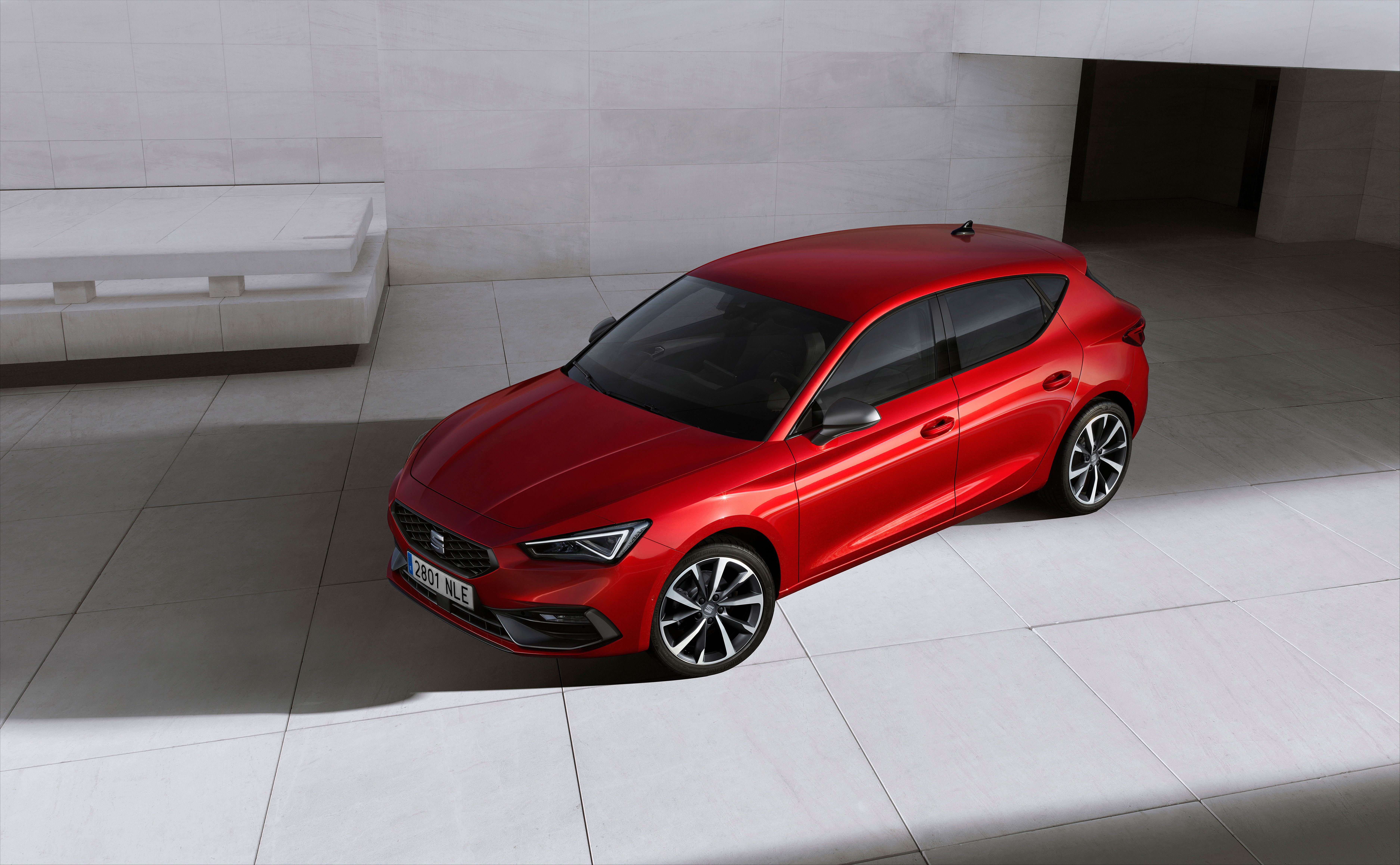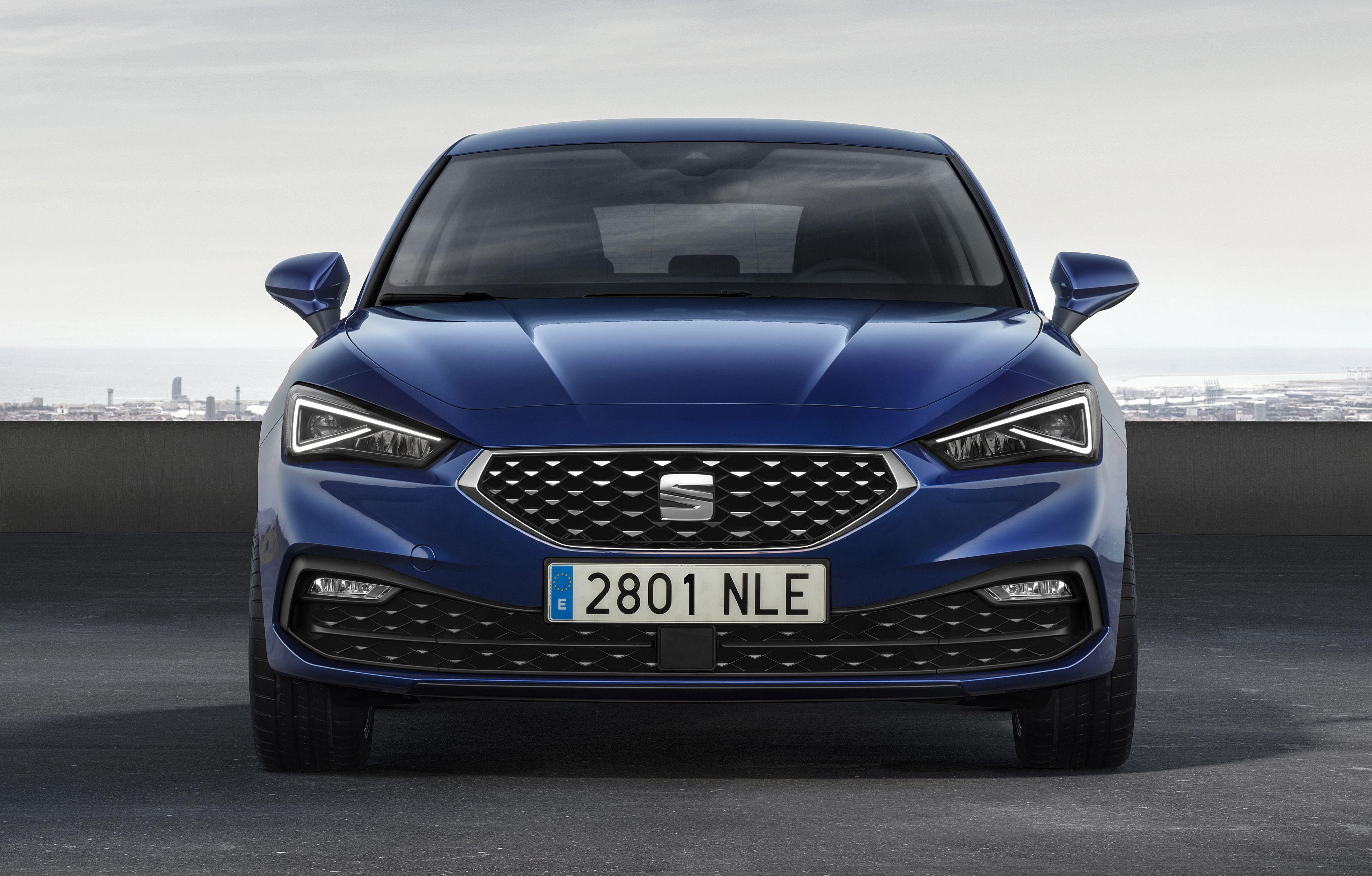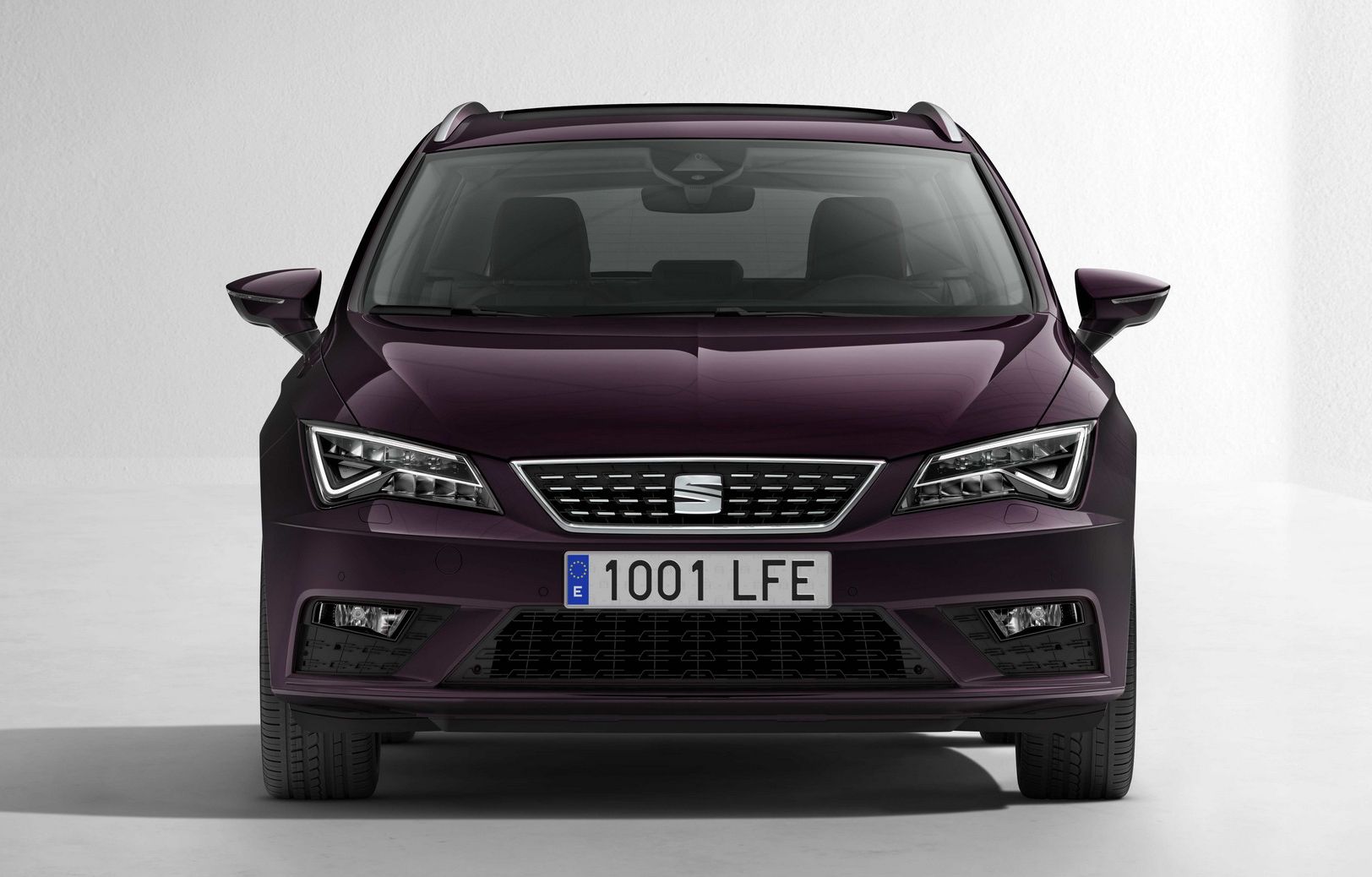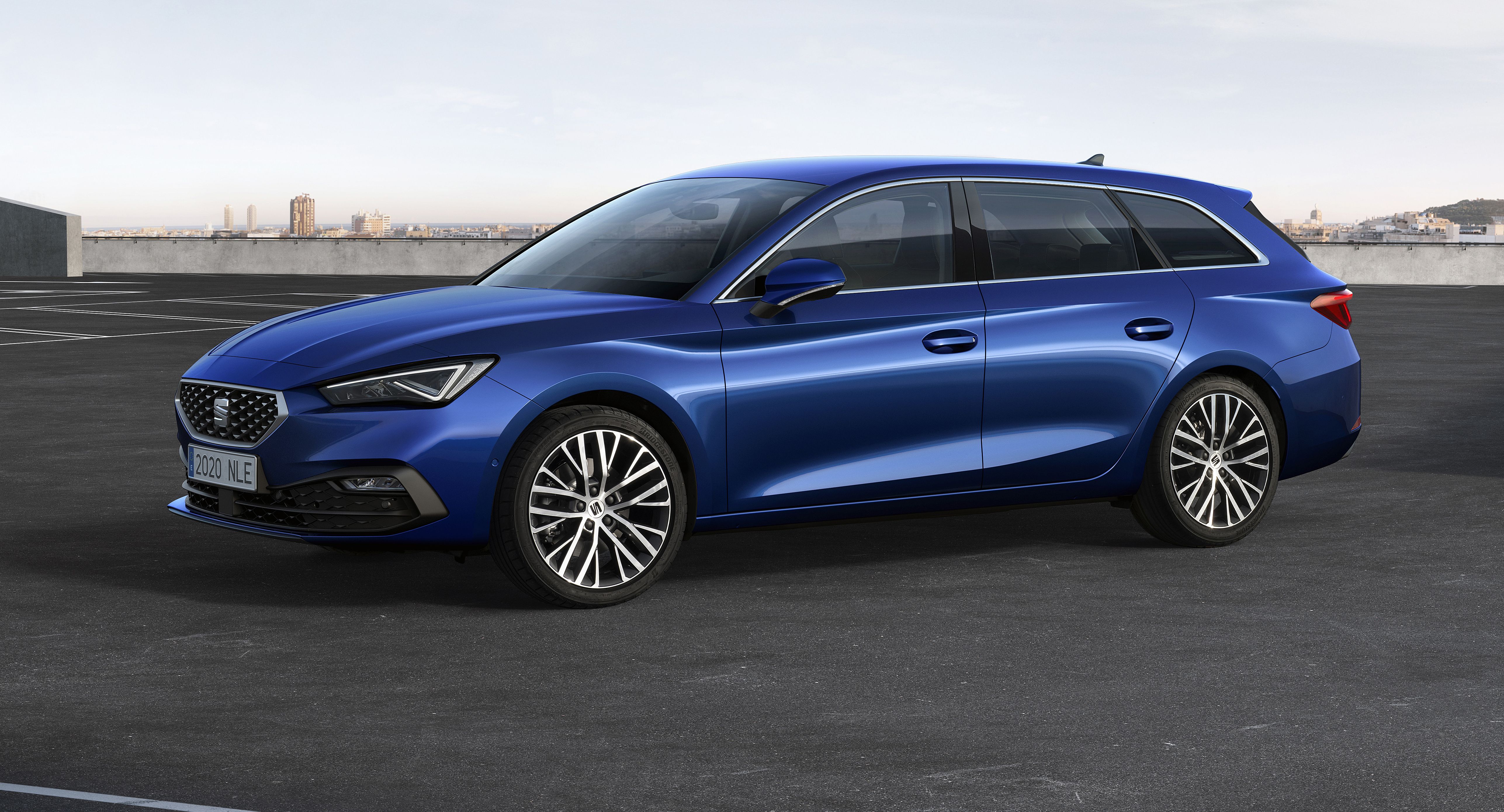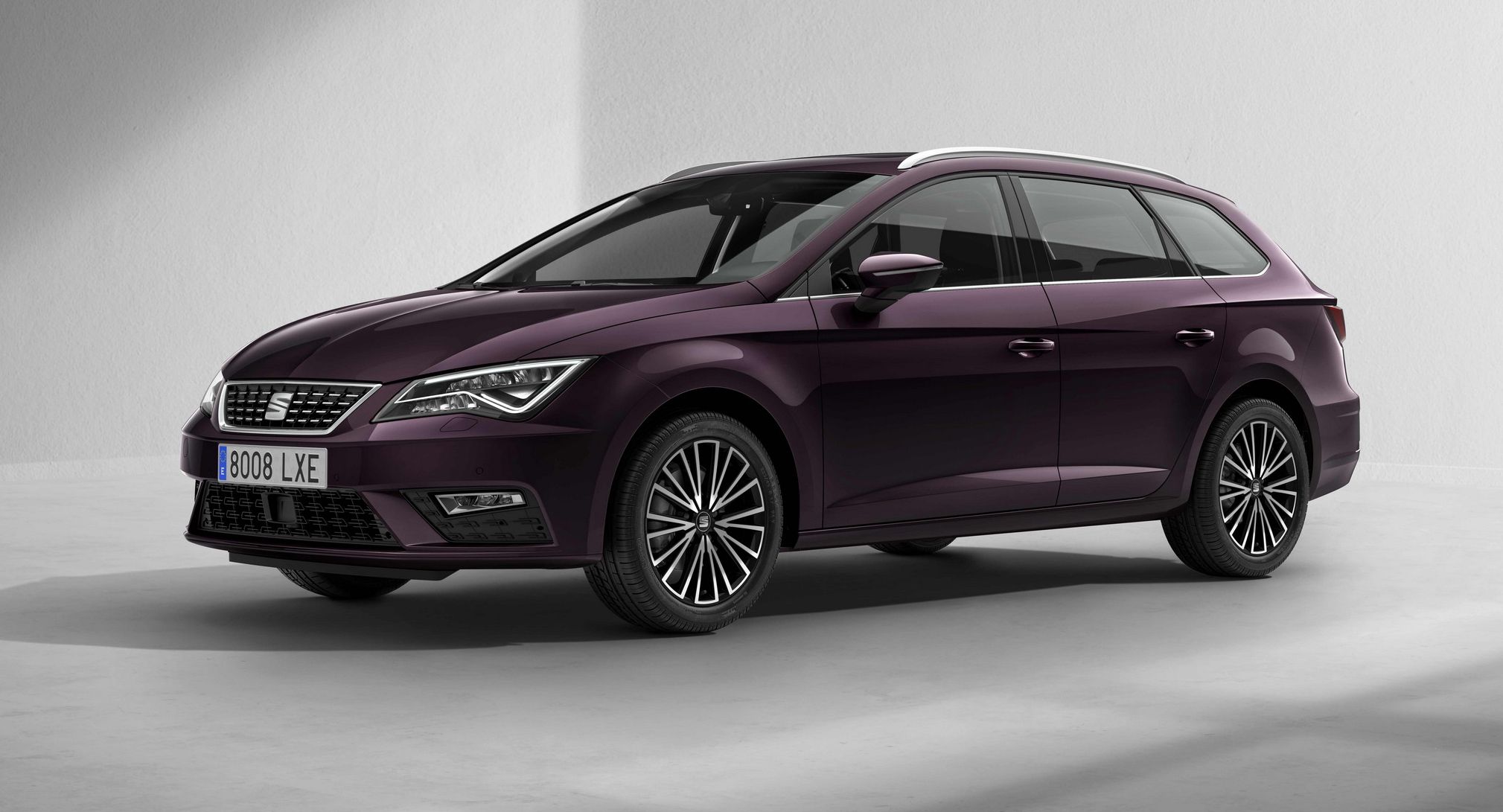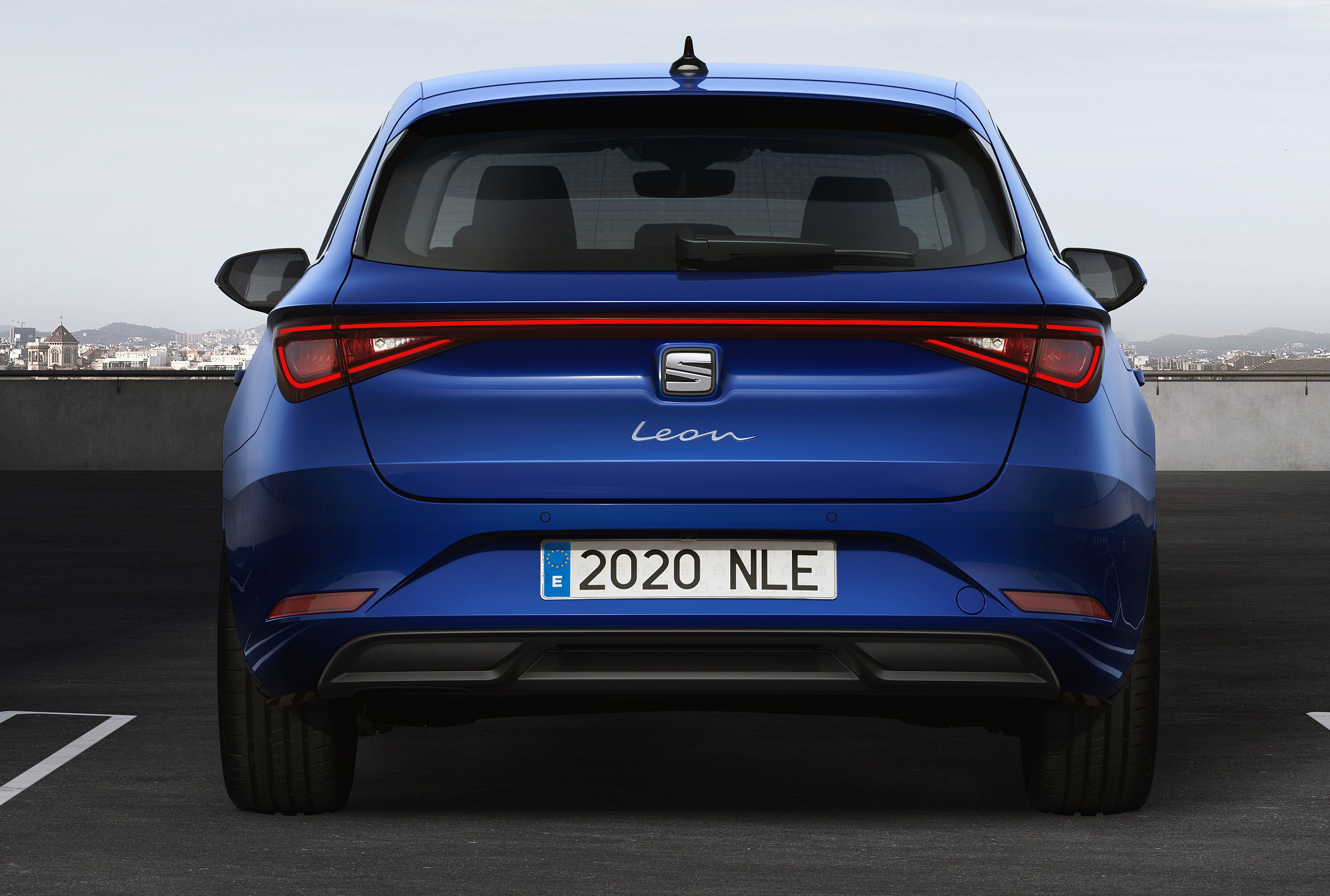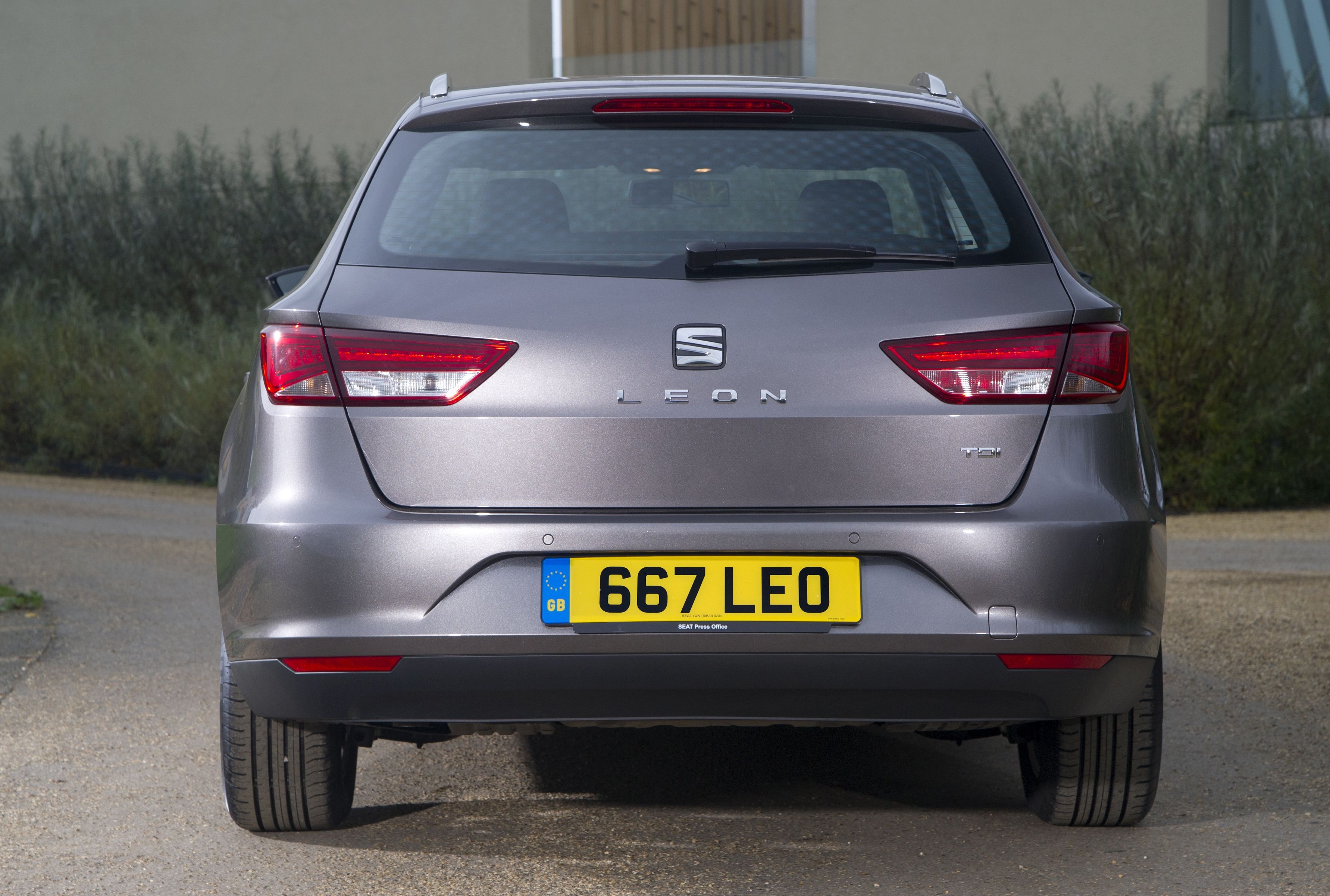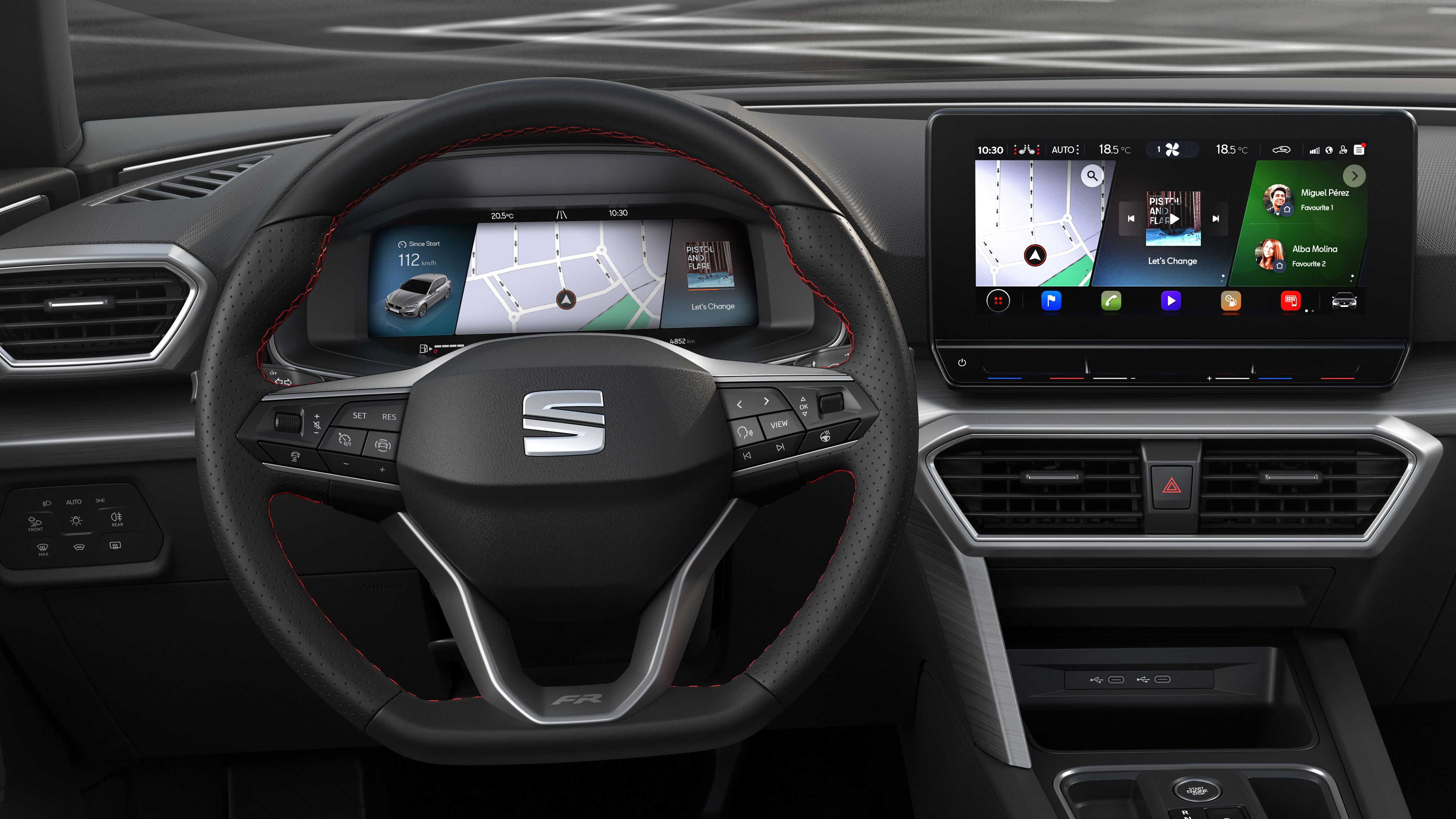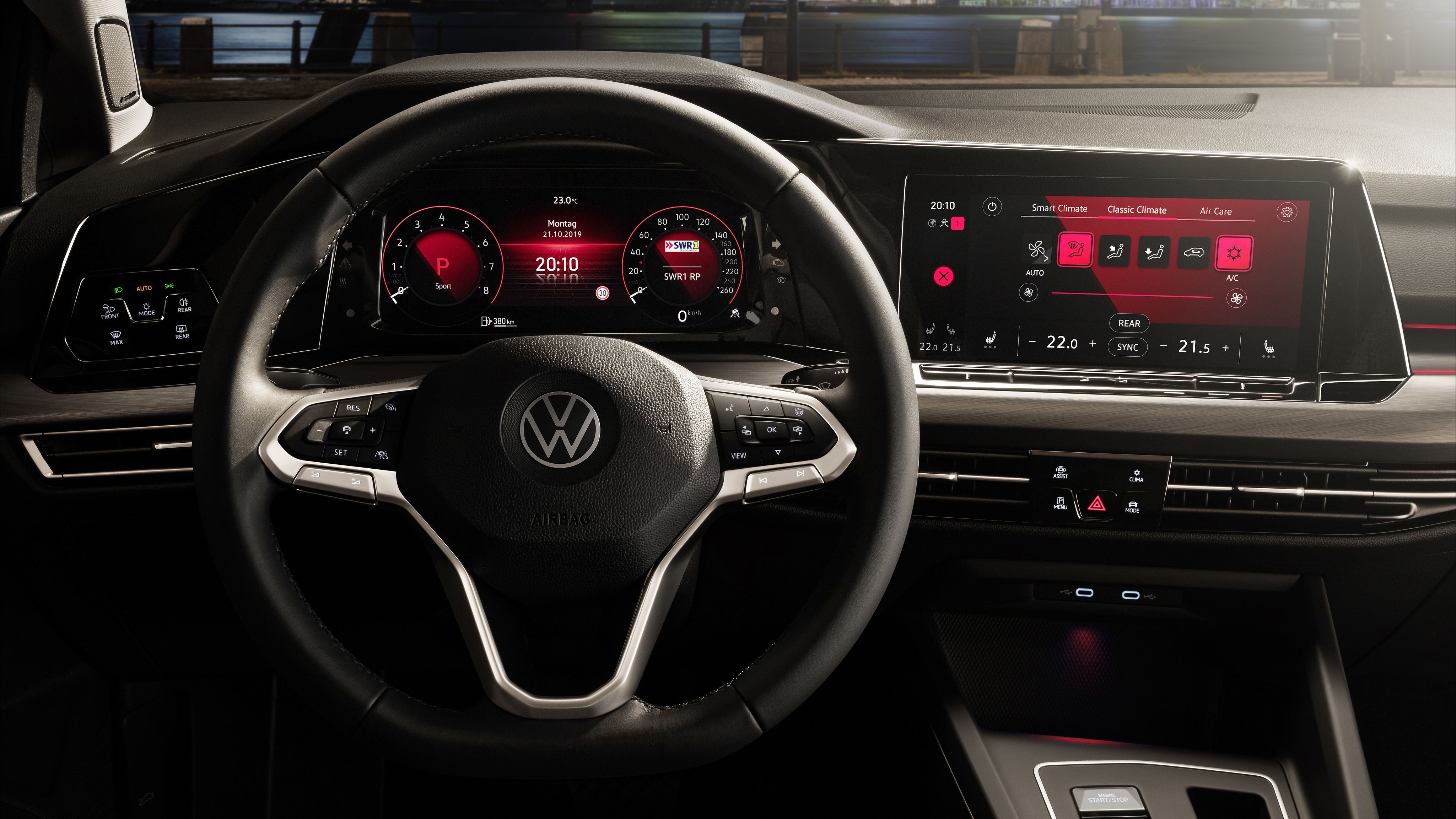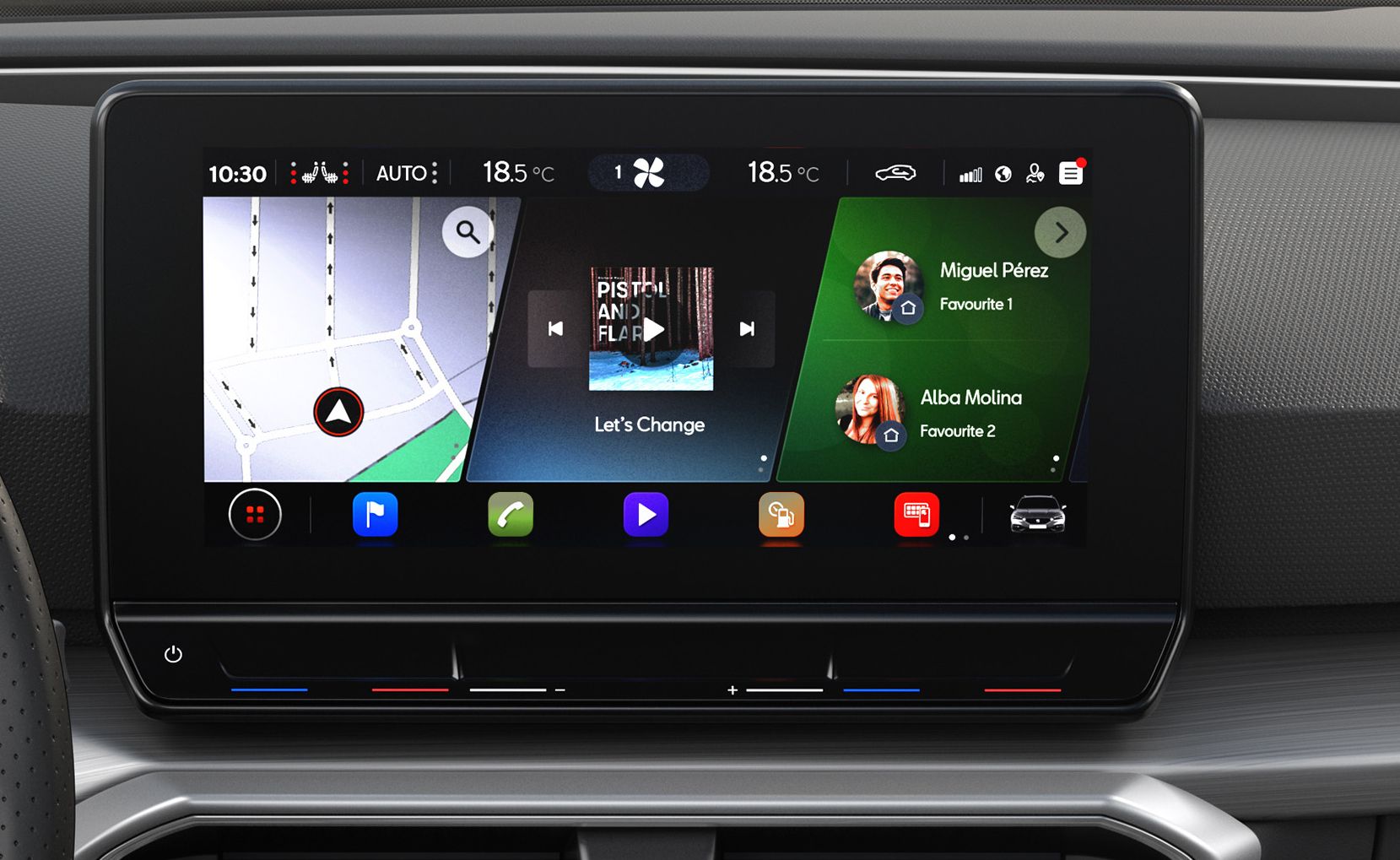The 2020 Seat Leon is the fourth-generation version of the Spanish hatchback and wagon. Built on the same MQB Evo platform as the Volkswagen Golf Mk8, the 2020 Leon is essentially a Golf with a different body and a slightly different interior. But for what it's worth, the Leon looks notably sportier on the outside and the cabin isn't far below the premium-like interior of the Golf. Power options are also shared with the Golf, so you can choose between gasoline, diesel, mild hybrid, and plug-in hybrid options. Let's find out more about the new 2020 Leon hatchback and wagon in the review below.
2020 Seat Leon
- Make: Array
- Model: 2020 Seat Leon
- [do not use] Vehicle Model: Array
<
Exterior
The fourth-generation Leon is a notable departure from the old model design-wise. The biggest change is the sharper body with more angular styling cues and a more aggressive stance overall.
Overall, the fourth-gen Leon looks completely different from its predecessor. Only the LED pattern in the headlamps reminds of the old car. The engine hood is also slightly longer, but it's mostly because the nose was moved forward for the grille.
|
|
ids=883338,883339 |
no_overlay=false |
before_label=2020 Seat Leon |
after_label=2019 Seat Leon> |
The profile doesn't look strikingly different, but the fact that Seat moved the A-pillars rearward gives the new Leon a sportier look. The scallop under the beltline, on the front door, was carried over from the old model, but it's deeper now. A similar crease above the side skirts helps create an organic and more appealing design. Toward the back, we can see a smaller quarter window, a slightly wider C-pillar, and muscular rear fenders.
|
|
ids=883340,883341 |
no_overlay=false |
before_label=2020 Seat Leon |
after_label=2019 Seat Leon> |
Rear-end changes are similar to those in the front and revolve around creating a more aggressive look. Just like the headlamps, the taillights are skinnier toward the center of the fascia and wider to the sides. The LED pattern remains similar to the old model.
The rear bumper doesn't look all that different compared to the outgoing hatchback. But while the license plate recess is similar, the surfaces are smoother. The diffuser-like element is a bit different, though, and features larger, rectangular exhaust pipes.
|
|
ids=883344,883345 |
no_overlay=false |
before_label=2020 Seat Leon |
after_label=2019 Seat Leon> |
Thanks to these changes, the fourth-generation Leon is more aerodynamic than its predecessor. Specifically, the drag coefficient improved by eight percent.
As far as size goes, the new Leon is longer and lower, but also a bit narrower. At 4,368 mm (172 inches), the new Leon is 86 mm (3.4 inches) longer than its predecessor. The hatchback is 1,800 mm (70.9 inches) wide, which makes it 16 mm (0.6 inches) narrower than the old Leon. Height is about the same at 1,456 mm (57.3 inches), only three mm (0.1 inches) lower than the old model. The wheelbase is also longer than the previous Leon at 2,686 mm (105.7 inches), 50 mm (two inches) more.
2020 Seat Leon exterior dimensions
|
Length |
4368 |
4282 |
|---|---|---|
|
Width |
1800 |
1816 |
|
Height |
1456 |
1459 |
|
Wheelbase |
2686 |
2636 |
The Estate model boasts similar changes to its predecessor in terms of exterior dimensions, with one exception: it's 93 mm (3.6 inches) longer. At 4,642 mm (182.7 inches) long, it's also 274 mm (10.8 inches) longer than the hatchback.
Interior
Like most automakers out there, Seat took the clean and simple approach for the Leon's new interior. The old a bulky dash was replaced by a slim and multi-tier unit with sharp lines a small "tray" in the center. The infotainment display sits on this "tray," a notable change from the old model that featured an integrated screen.
|
|
ids=883346,883347 |
no_overlay=false |
before_label=2020 Seat Leon |
after_label=2020 Volkswagen Golf> |
But there are other cool details to talk about. For instance, the decorative molding from the center dashboard extends toward the corners and runs into the upper door panels. We can also see a bit of red detailing at the top. The metal frames of the A/C vents look cool as well. The steering wheel is very similar to the Golf Mk8, which is a good thing, with only the center section and the button layout being slightly different. On the other hand, the lower door panels look boring, while the materials on the center console feel cheap.
As far as tech goes, the base model comes with an 8.25-inch infotainment screen and a smaller display in the instrument cluster. Opt for the Seat Digital Cockpit, and things become more interesting with a massive, 10.25-inch cluster and a 10-inch infotainment display. The latter features gesture recognition, voice recognition, and its "diagonal" graphic design positioning was inspired by the Diagonal avenue of Barcelona. More importantly, this is the first infotainment system with an interface created by Seat's very own team.
The plug-in hybrid models also come with a special e-Manager feature that helps you prepare a trip by managing routes and departure times, as well as the air conditioning system, from a smartphone app.
The new Leon is pretty well equipped for a non-premium vehicle. The base model comes with features like keyless start, two USB ports, an electronic parking brake, soft cloth upholstery, a leather steering wheel, and Seat Connect technology. Upgrade to the SE Dynamic trim, and you get a navigation system, the larger 10.25-inch infotainment display, the 10.25-inch instrument cluster, and tinted rear side windows.
When it comes to passenger room, things remain similar in all departments save for rear-passenger legroom. Thanks to the longer wheelbase and better packaging, rear-seat passengers will enjoy an extra 49 mm (1.9 inches) of legroom. Headroom in the first row increased by three mm (0.1 inches), while headroom in the second row is down one mm (0.04 inches), changes that you won't even notice.
As far as trunk space goes, the new Leon hatchback is just as roomy as its predecessor. The Leon can swallow up to 380 liters (13.4 cubic feet) of luggage behind the second-row seats. Seat has yet to release figures for the trunk with the rear seats folded flat, but it should be similar to the old model at 1,270 liters (44.8 cubic feet). Both figures are similar to the Volkswagen Golf Mk8. The Ford Focus offers a bit less behind the second row at 375 liters (13.2 cubic feet), but more behind the first row at 1,354 liters (47.8 cubic feet).
Moving over to the Estate version, it offers 617 liters (21.8 cubic feet) of room behind the second-row seats. That's 30 liters (1.1 cubic feet) more than the outgoing wagon and a solid 237 liters (8.4 cubic feet) more than the hatchback version. If space is what you're looking for, the Estate is clearly the better option.
Drivetrain
The new Seat Leon rides on Volkswagen's MQB Evo platform. These underpinnings are shared with a wide variety of Volkswagen Group models, including the Audi A3 and TT, all Skoda models, and almost all Volkswagen vehicles in production.
The updated platform enables Seat to add a new engine as well. The base gasoline range now features a 1.0-liter three-cylinder engine rated at 110 PS (108 horsepower). This mill replaces the old 1.2-liter four-pot that delivered similar power. Move up the trim ladder, and you'll get a 1.5-liter four-cylinder unit. Rated at either 130 or 150 PS (128 or 148 horsepower), it replaces the old 1.4- and 1.5-liter mills that produced 125 and 150 PS (123 and 148 horses).
All three engines mate to a six-speed manual transmission. They also feature a Miller-cycle combustion process, variable geometry turbocharger, and integrated Active Cylinder Management. The Miller-cycle optimizes valvetrain control with early closure of the inlets and improves fuel efficiency by up to 10 percent.
The range-topping model features a larger, 2.0-liter four-cylinder engine. This unit cranks out 190 PS (187 horsepower) and replaced an old engine with identical displacement and output. Unlike the other gas engine, the 2.0-liter comes standard with a seven-speed DSG transmission.
2020 Seat Leon gasoline engines
|
Engine |
Horsepower |
|
1.0-liter three-cylinder |
108 HP |
|
1.5-liter four-cylinder |
128 HP |
|
1.5-liter four-cylinder |
148 HP |
|
2.0-liter four-cylinder |
187 HP |
Moving over to diesels, Seat offers a 2.0-liter four-cylinder in two flavors. The base model cranks out 115 PS (113 horses), while the more powerful version generates 150 PS (148 horsepower). These mills replace an old 1.6-liter with 105 PS (103 horses) and a 2.0-liter with 150 PS (148 horsepower). Previously Seat offered a 1.6-liter mill with 90 PS (89 horses), so expect a new entry-level oil burner soon. The new diesel engine features a Selective Catalytic Reduction system that includes dual AdBlue injectors that reduce NOx emissions compared to previous generation oil burners.
2020 Seat Leon diesel engines
|
Engine |
Horsepower |
|
2.0-liter four-cylinder |
113 HP |
|
2.0-liter four-cylinder |
148 HP |
Just like the Golf, its Volkswagen-badged sibling, the Leon now comes with mild hybrid drivetrains, a first for the nameplate. Two models are available, with 1.0- and 1.5-liter gas engines that work in conjunction with 48-volt starter-generators and lithium-ion batteries. The three-cylinder generates 110 PS (108 horsepower), while the four-cylinder packs 150 PS (148 horses). The 48-volt system enables the vehicle to coast with the engine switched off, harvests energy under deceleration, and provides electrical torque assistance during acceleration.
2020 Seat Leon hybrid engines
|
Engine |
Horsepower |
|
1.0-liter 48-volt starter-generator |
108 HP |
|
1.5-liter 48-volt starter-generator |
148 HP |
Finally, the Seat Leon is available with a full hybrid setup that combines a 1.4-liter gas engine, an electric motor, and a lithium-ion battery pack. Total output for the combo is 204 PS (201 horsepower), which makes this Leon the most powerful model in the lineup. All-electric range is quite decent at 60 km (38 miles), while charging from empty too full is quite quick at 3.5 hours.
2020 Seat Leon plug-in hybrid
|
Engine |
1.4-liter gas engine |
|
Electric motor |
One |
|
Battery |
lithium-ion pack |
|
Combined Output |
201 HP |
|
Range |
38 miles |
|
Charging time |
3.5 hours |
Safety and driving assist
When it comes to safety and driving assist features, the fourth-generation Leon is the safest Seat created so far. The hatchback and wagon models are fitted with a suite of active safety systems that enables them to "see" the surroundings and help you avoid crashes in various scenarios. One important highlight is Predictive Adaptive Cruise Control, which uses GPS data from the navigation system and input from the front-mounted camera to adjust speed according to the road ahead and the speed limitations displayed on traffic signs.
But in order to use this feature, you need to keep your hands on the steering wheel and pay attention to the road. If the vehicle senses you've taken both hands off the wheel for more than 15 seconds, it will issue audible and visual warnings, or even give you a braking jolt. If you fail to respond, the Emergency Assist 3.0 system will bring the car to a complete stop.
Prices
Pricing for the new Leon is not yet available, but the hatchback shouldn't be notably more expensive than the outgoing model. The latter starts from £18,850 in the U.K., so the new-generation Leon will probably come in at a little over £19,000. The Estate starts from £19,845, so a £20,000 sticker for the new-generation wagon seems very likely.
Competition
Volkswagen Golf Mk8
The iconic Volkswagen Golf was redesigned for the 2020 model year. Although it still looks familiar, the exterior design includes some features that make it stand out, particularly the headlamps and the taillights. The hatchback's interior looks decidedly more appealing thanks to the infotainment display mounted closer to the instrument cluster and the continuous air-vent strip on the lower dashboard. It also features some higher quality materials as the Volkswagen Group wants to place it a tad above the Leon in the market. The Golf rides on the same underpinnings tho, so engine options are almost identical. The gasoline lineup includes 1.0- and 1.5-liter engines that develop from 90 to 150 PS (89 to 148 horsepower), while the diesel range features a 2.0-liter four-banger with 115 or 150 PS (113 or 148 horsepower). You can also opt for the same mild hybrid drivetrains with up to 150 PS (148 horsepower) and a full-blown hybrid GTE model. The latter delivers an impressive 242 horsepower. Pricing for the Golf Mk8 is not yet available, but the outgoing model starts from £22,000, so expect the new hatchback to be notably more expensive than the Leon.
Read our full story on the 2020 Volkswagen Golf.
Ford Focus
The Ford Focus is one of the most popular hatchbacks in this niche. Redesigned in 2018, it features a sporty design with angular lines, but it retains some of the defining features of its predecessor. While not as fancy inside the cabin as the Golf Mk8, it has plenty of technology to give the new Seat Leon a run for its money. Drivetrains are just as diverse. The gasoline range includes 1.0-liter EcoBoost engines with up to 125 PS (123 horsepower), while the 1.5-liter EcoBoost mills generate up to 182 PS (180 horsepower). The diesel range includes two mills. There's a 1.5-liter EcoBlue with 95 and 120 PS (94 and 118 horsepower) and a 2.0-liter EcoBlue with 150 and 190 PS (148 or 187 horsepower). Ford doesn't offer hybrid drivetrains. U.K. pricing for the Ford Focus starts from £20,645, a bit more than the Seat Leon.
Read our full review of the 2020 Ford Focus
Skoda Scala
The Scala is a really new nameplate, having been introduced for 2019 as a hatchback that slots under the Octavia. Essentially a replacement for the Rapid, it's aimed at the popular Volkswagen Golf and Ford Focus, but it also competes with the Seat Leon. Actually, the Scala is built on the same underpinnings, so it's essentially a re-bodied, lower grade Golf Mk8. The Scala is a cool looking vehicle as far as design goes, while its interior is closely related to both the Golf and the Leon. If you like your infotainment display to sit closer to the instrument cluster, the Scala is a better option than the Leon. Engine choices are very similar to its Volkswagen and Seat siblings. There's a 1.0-liter three-cylinder with 95 and 115 PS (94 and 114 horsepower), and a 1.5-liter four-cylinder with 150 PS (148 horsepower). The sole diesel option is a 1.6-liter four-cylinder with 115 PS (114 horsepower), but Skoda also offers a CNG drivetrain that cranks out 90 PS (89 horsepower). Pricing for the Scala starts from £16,940, so it's by far the most affordable hatchback in this comparison.
Read our full story on the 2020 Skoda Scala
Conclusion
It takes only a glance to notice that the new Seat Leon looks the part, and it's notably more aggressive than its predecessor. This is an important feat for an affordable hatchback as more and more customers want cars that look sporty in every niche. With the Golf Mk8 boasting a more restrained design, the Leon remains the sportiest choice if you're a fan of Volkswagen Group hatchback. Its interior isn't bad either, and trunk capacity is on par or only a tad below the competition. The fact that it rides on the same platform as the Golf is the Leon's key advantage. Mostly because it inherits the same mild-hybrid and full-fledged hybrid drivetrains, you won't find these with the Ford Focus or the Skoda Scala. So it's a good way to buy a Golf that looks better and costs a bit less.

